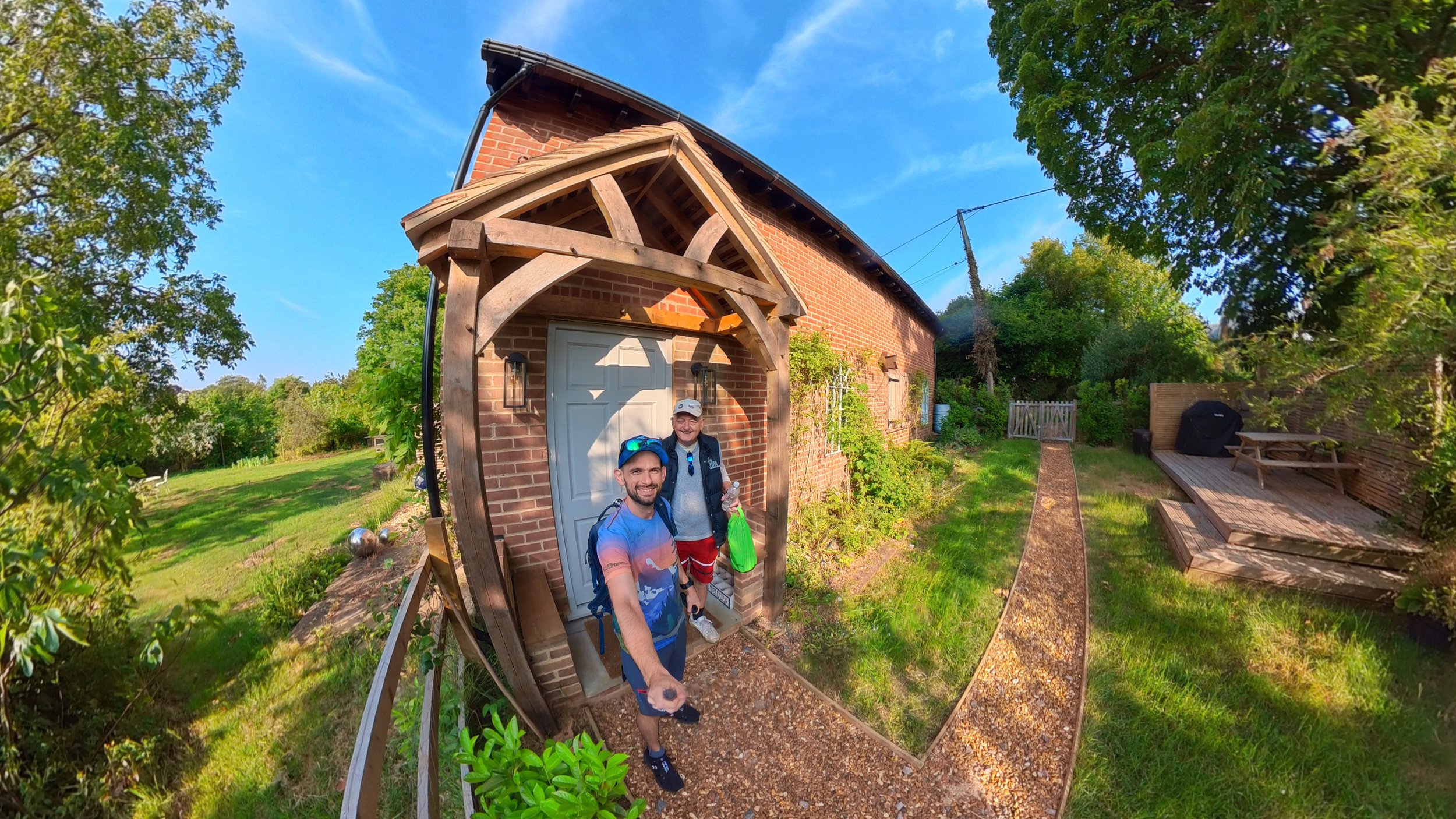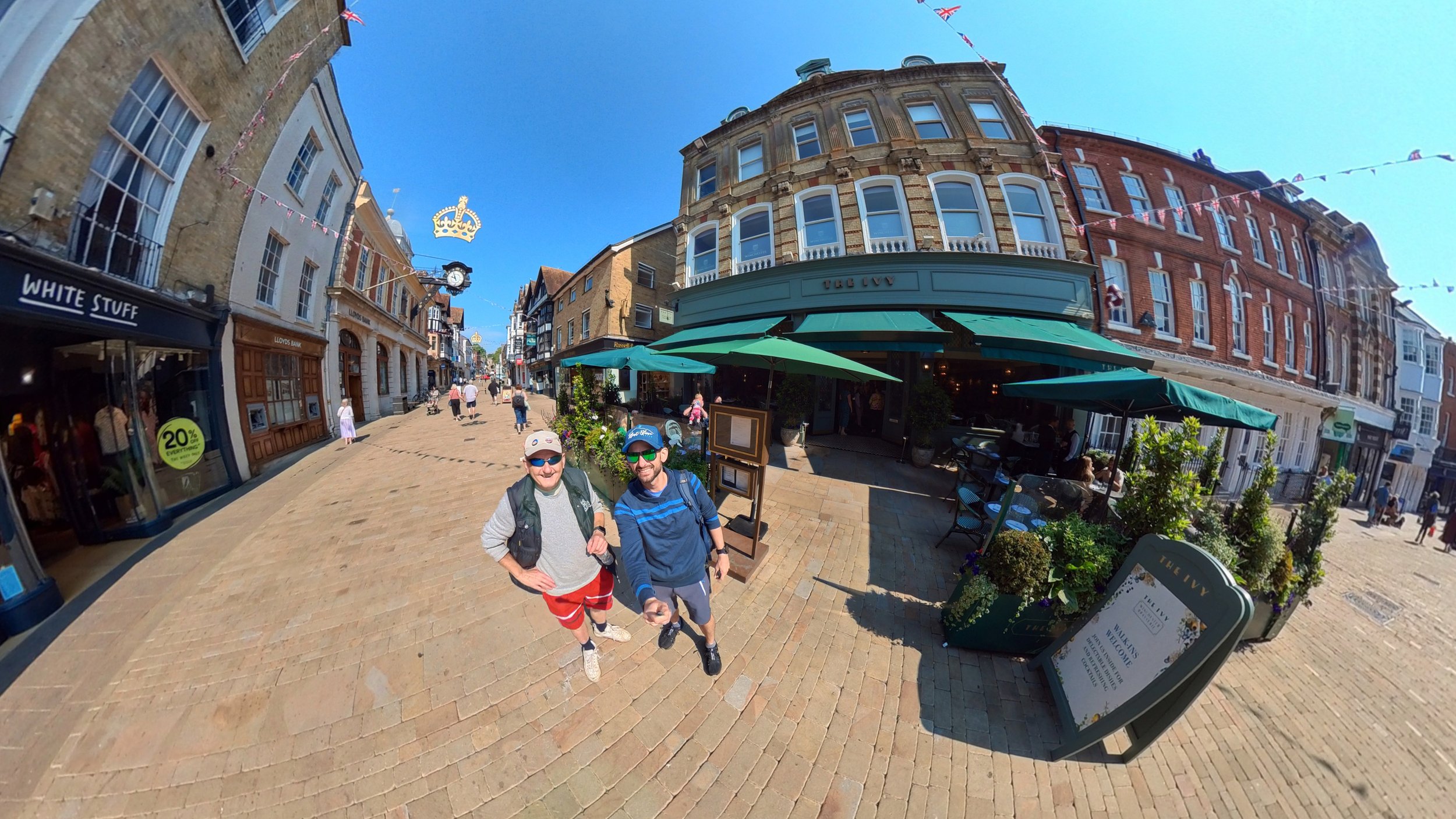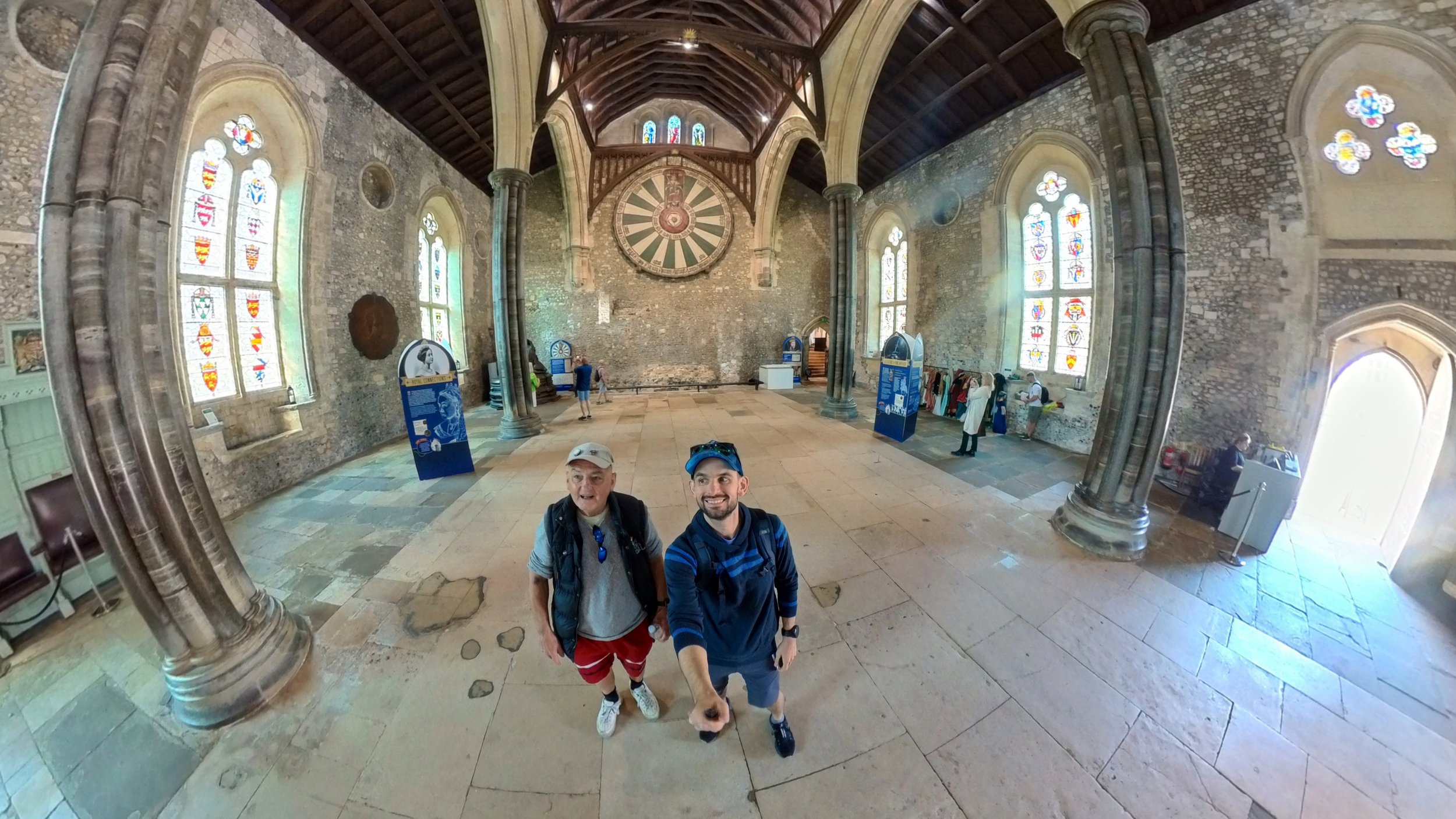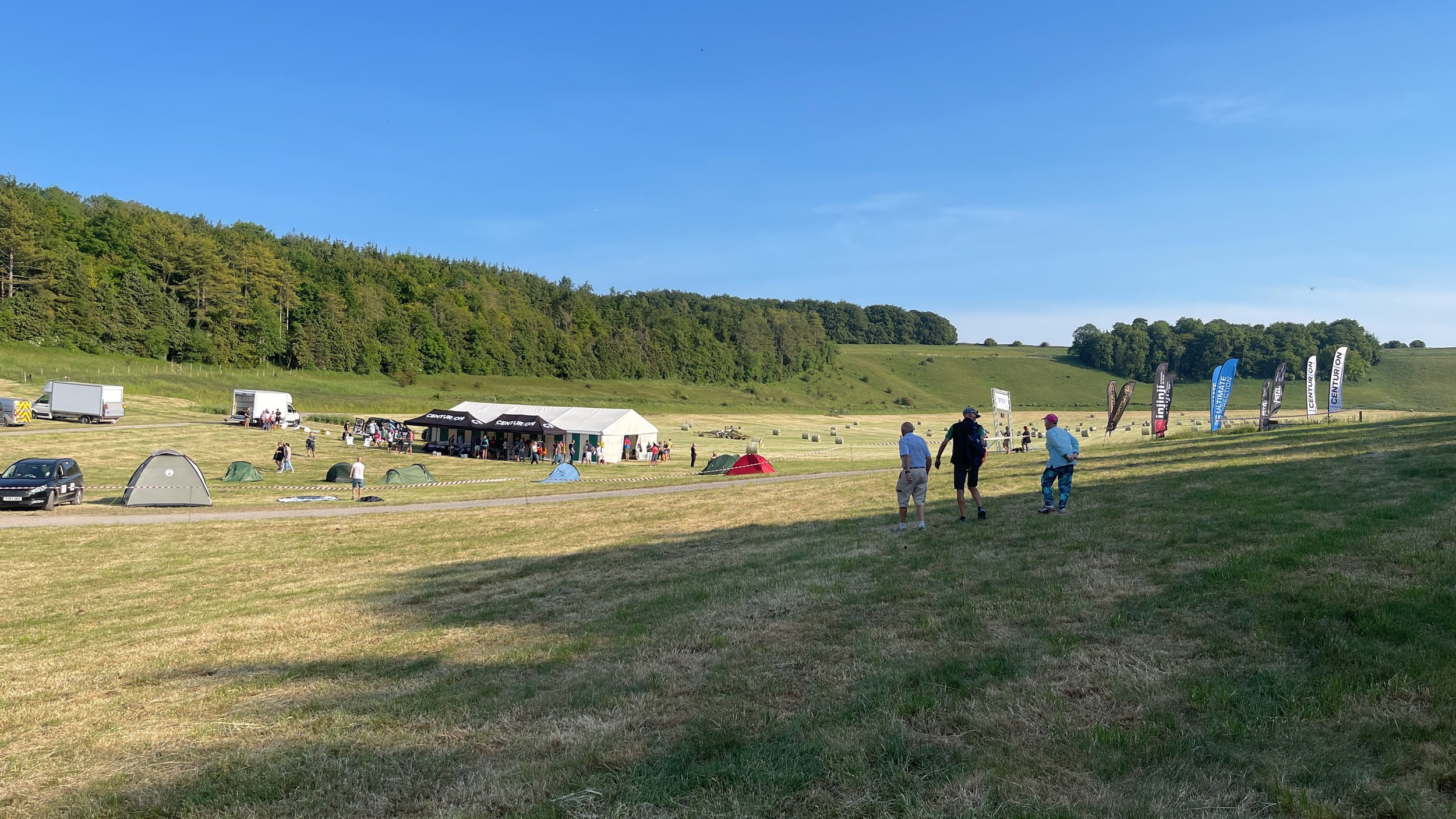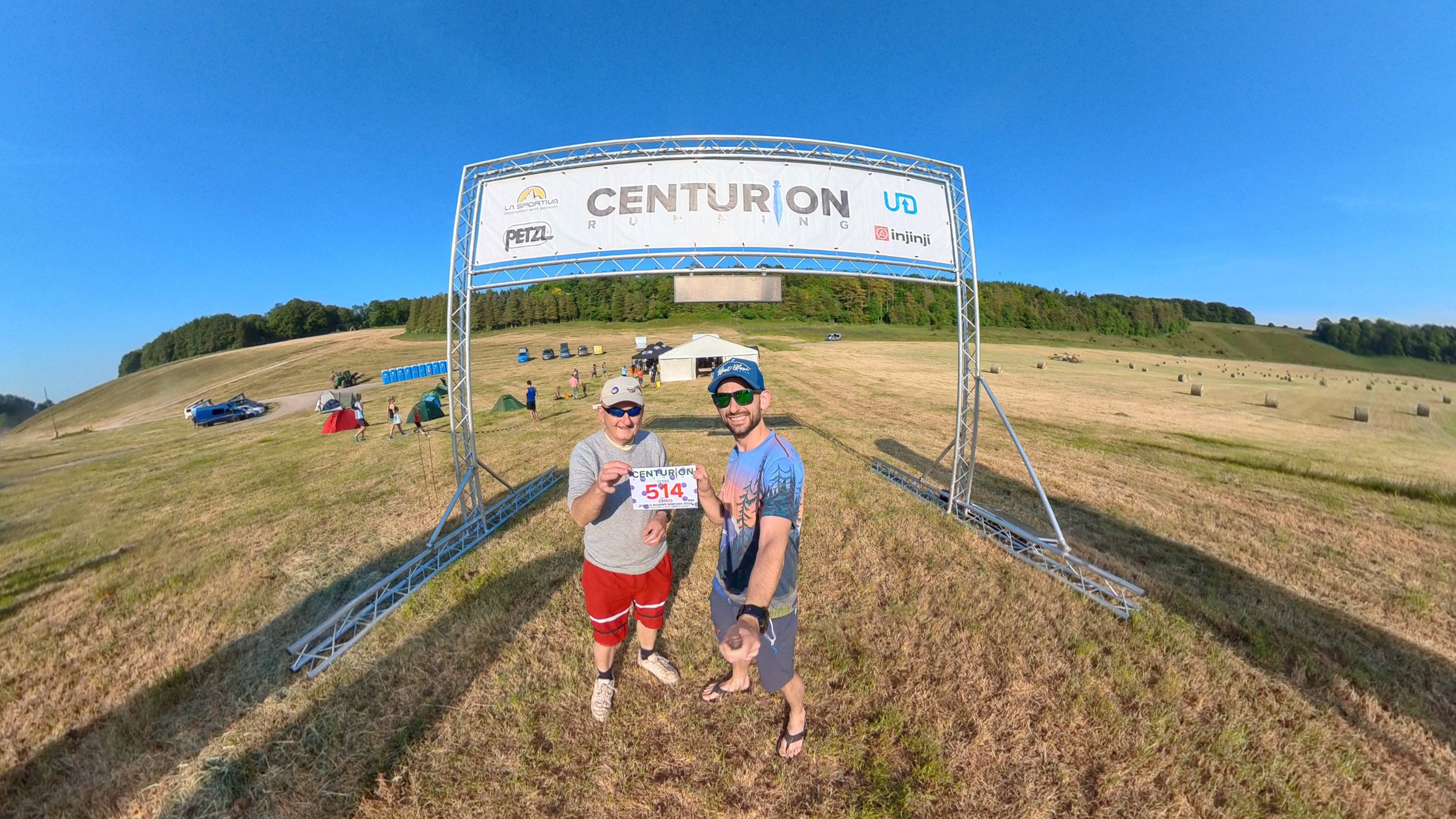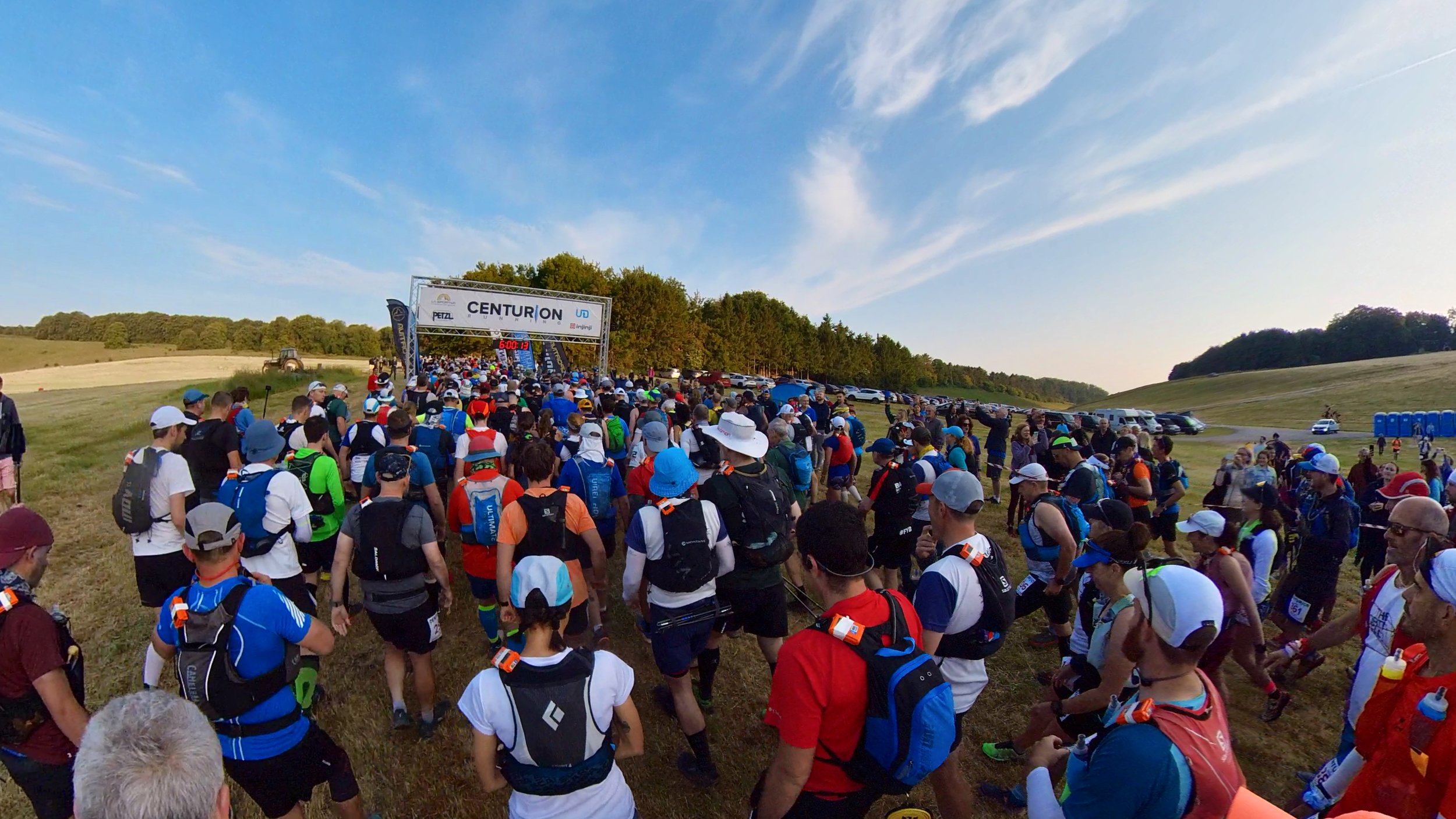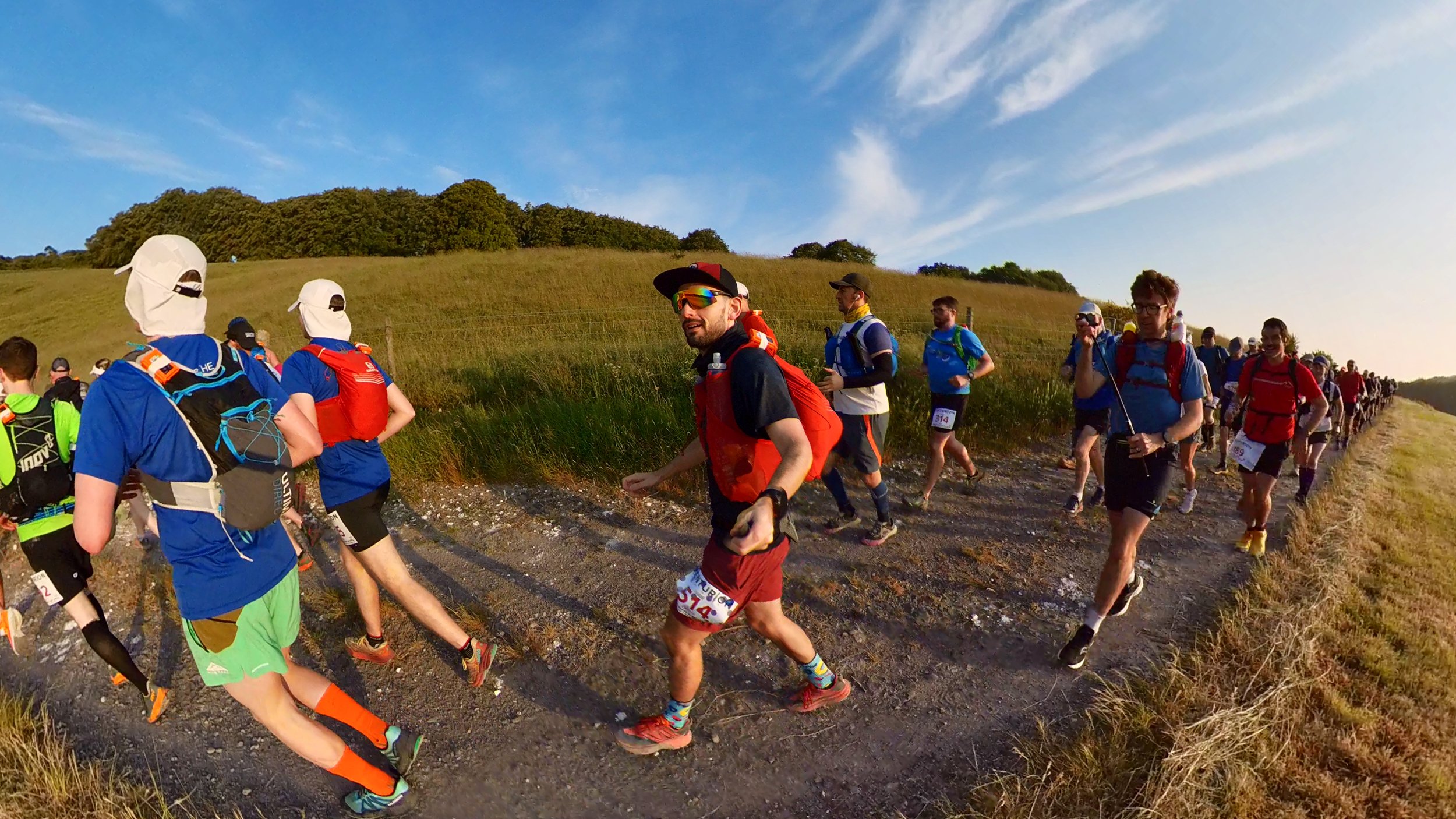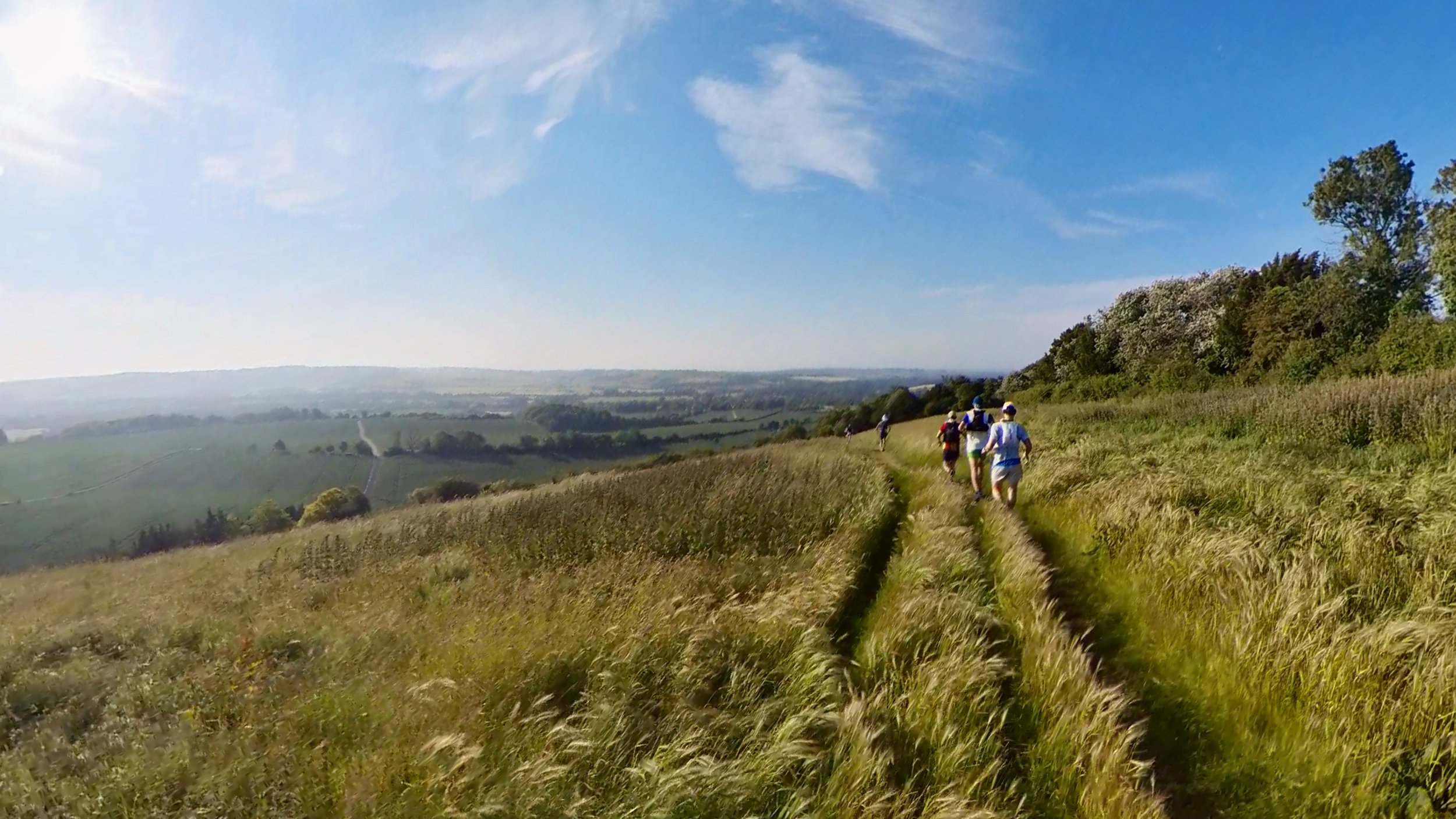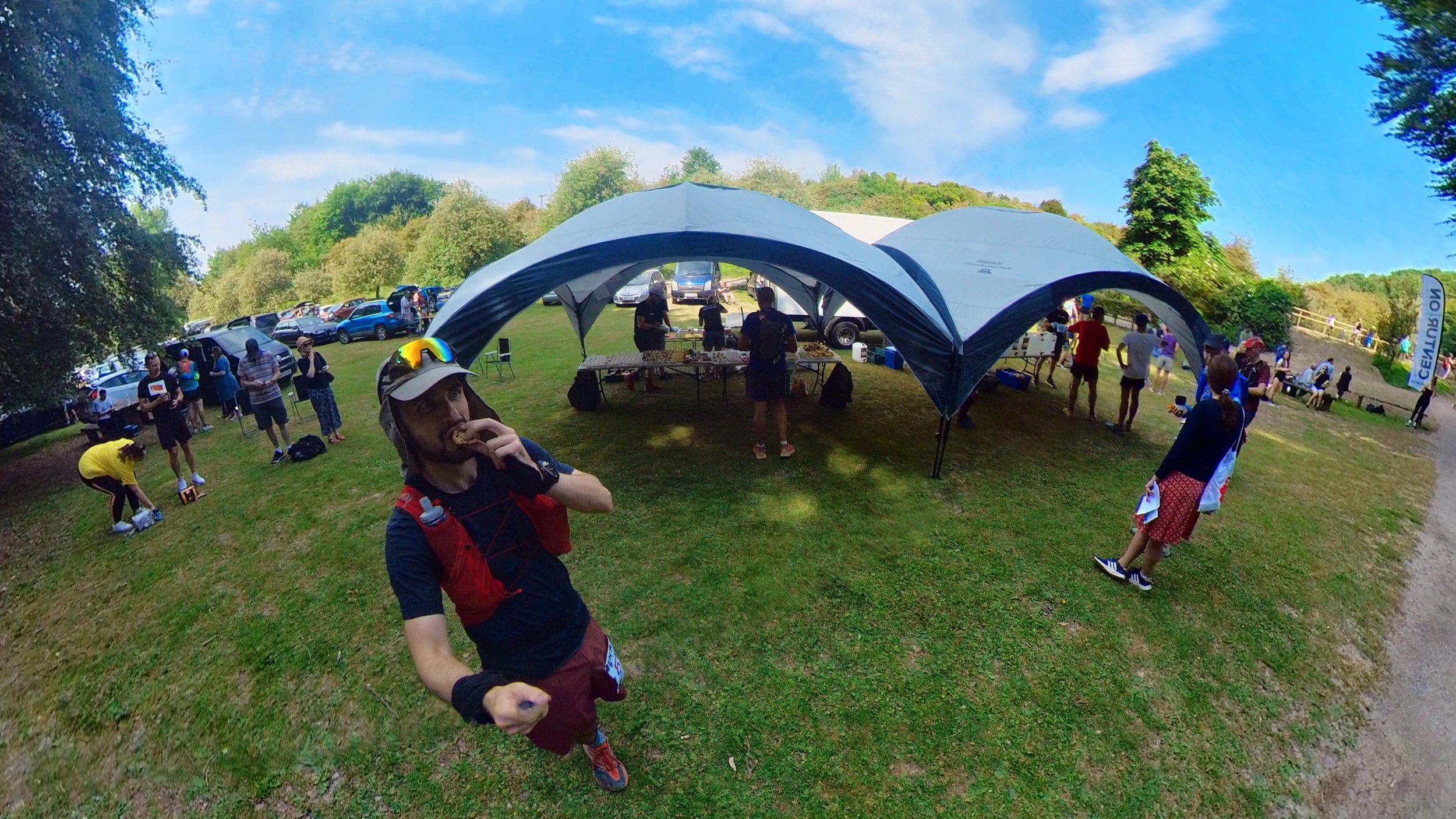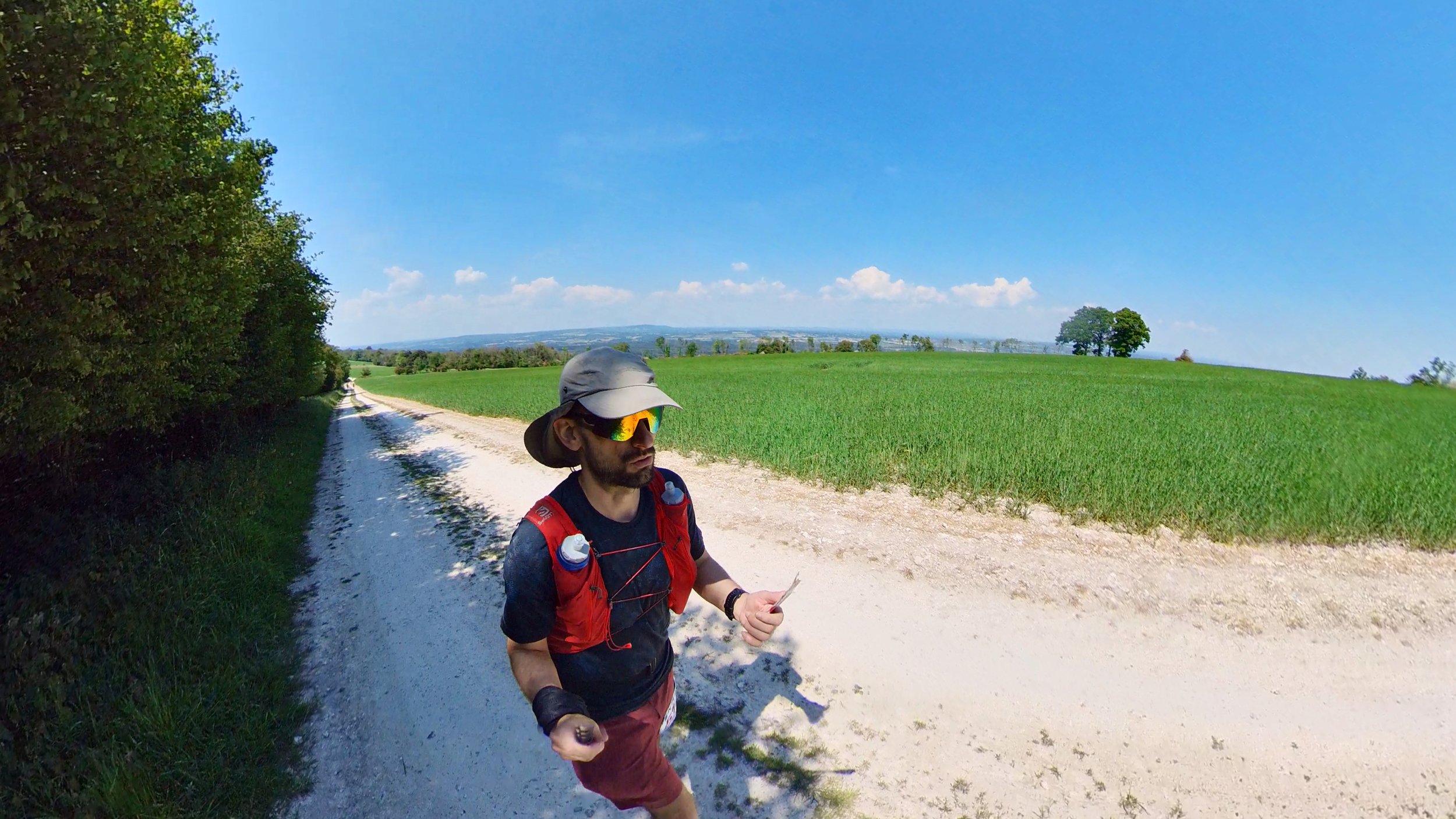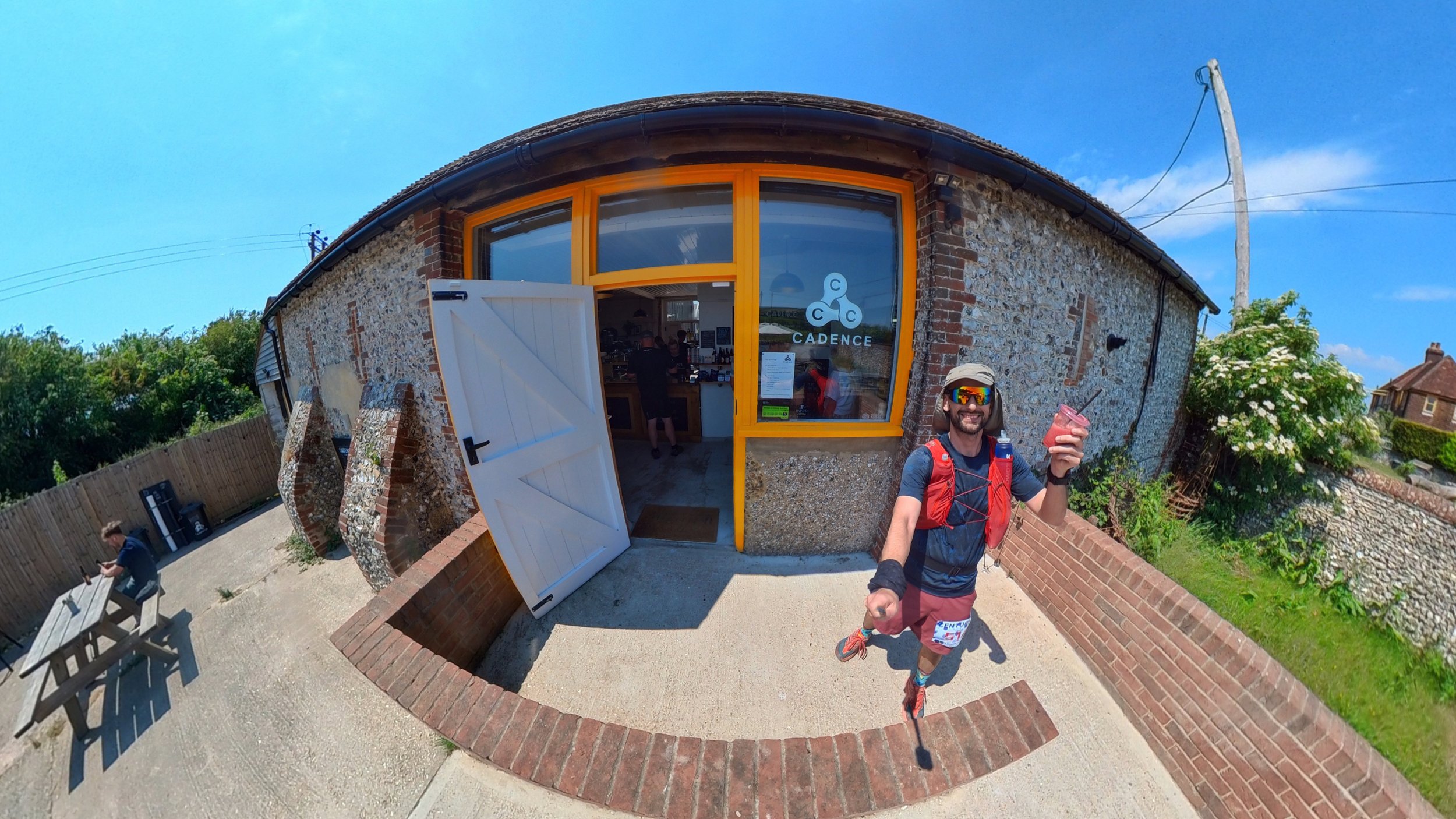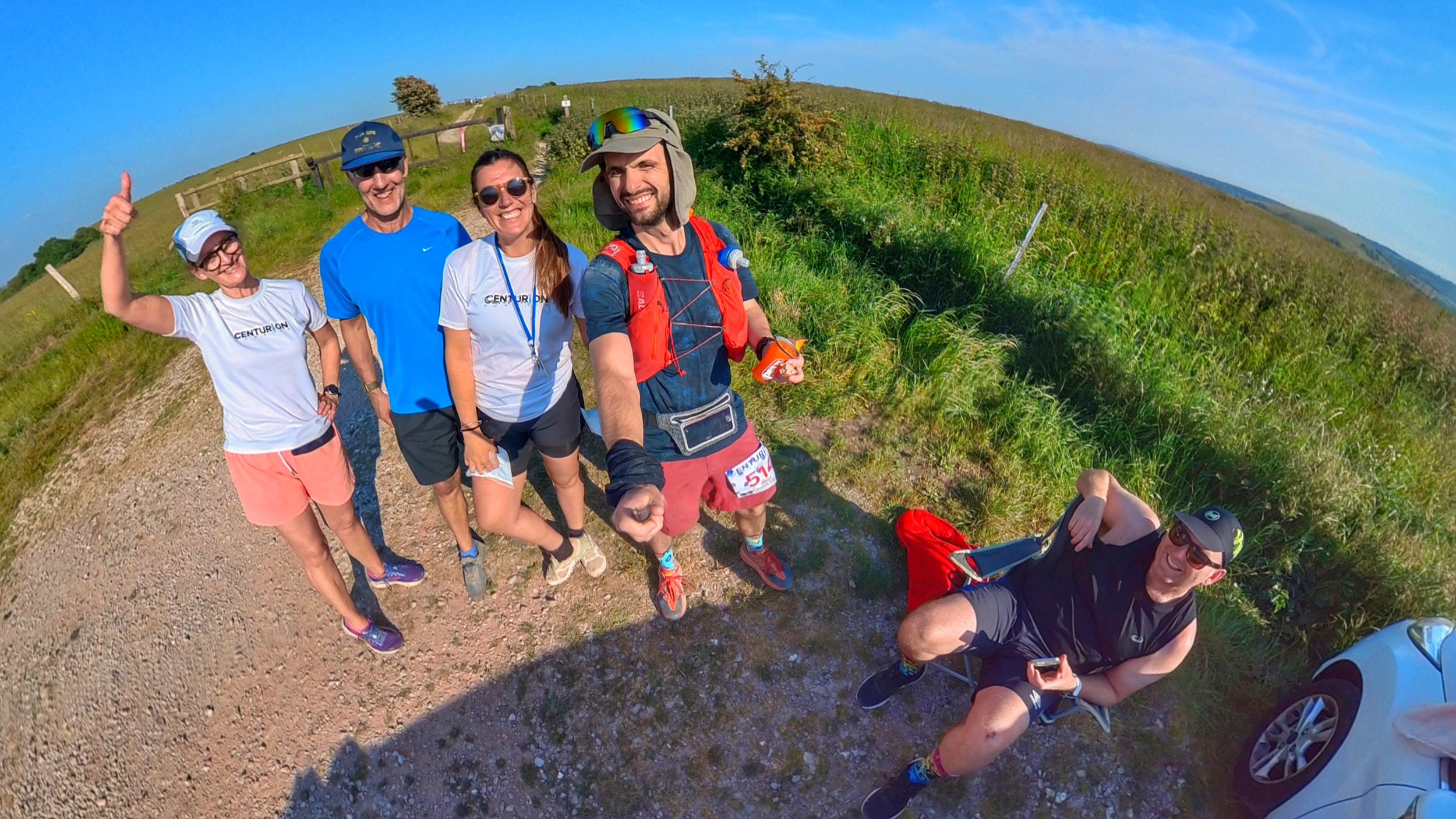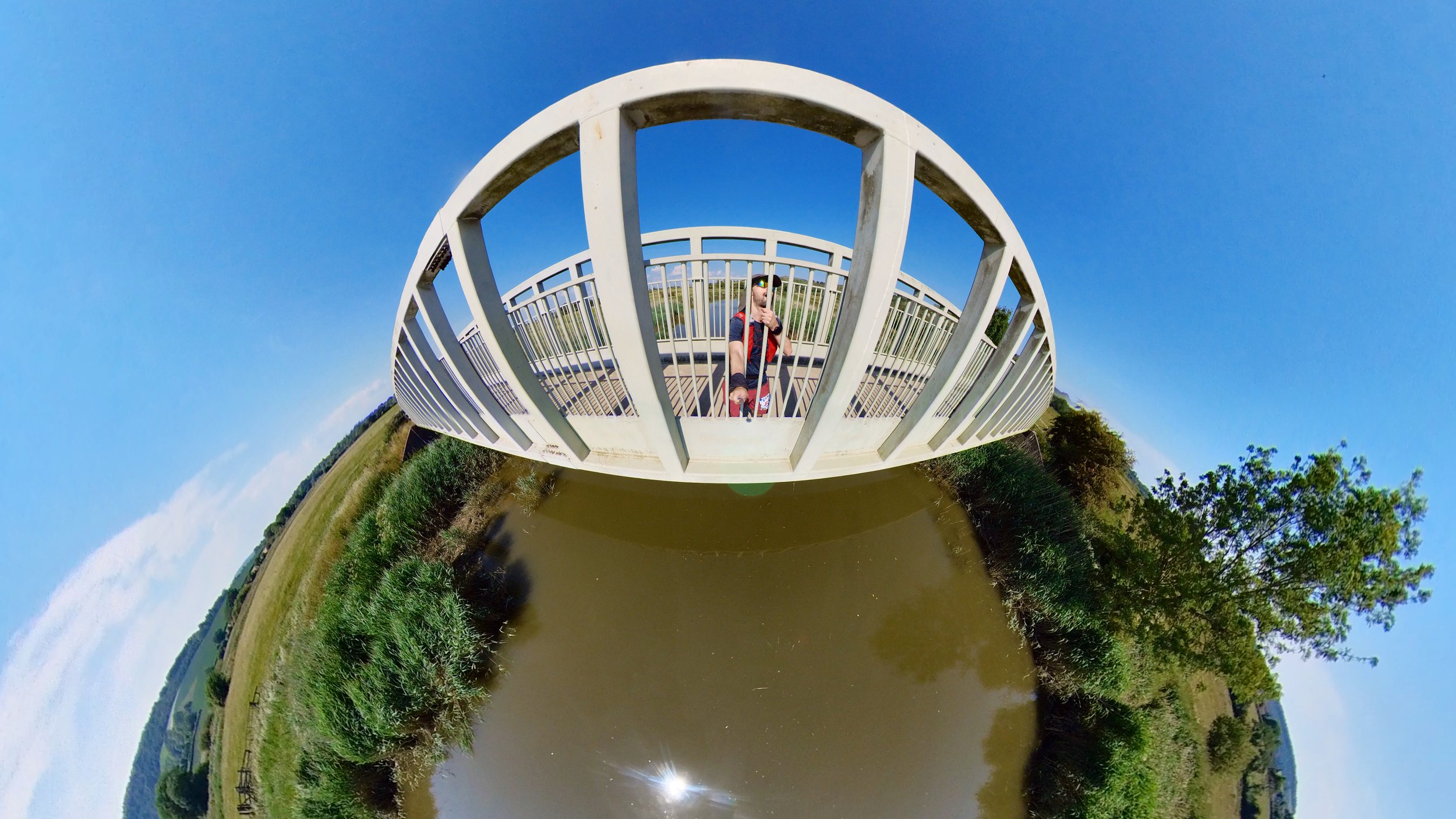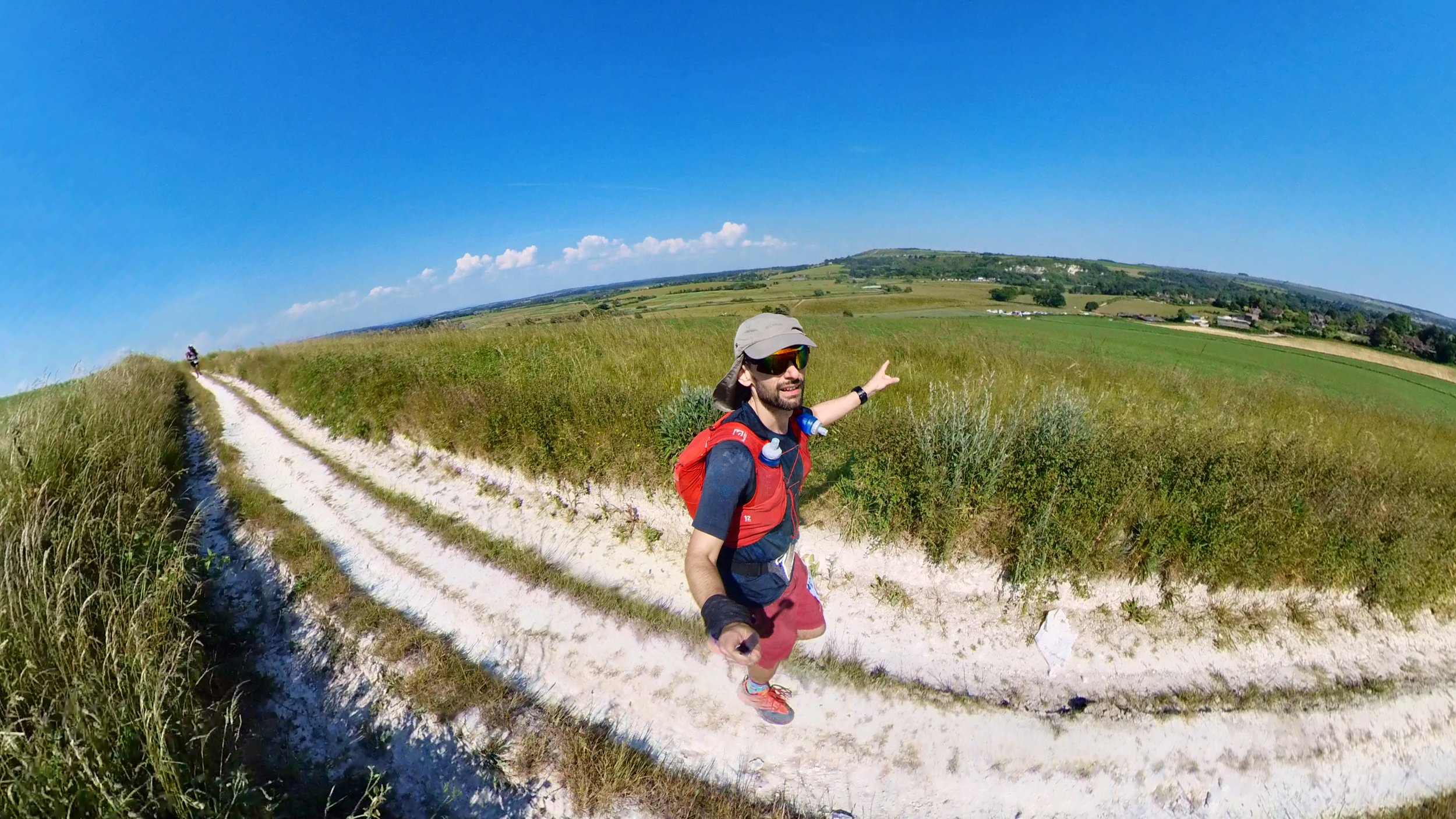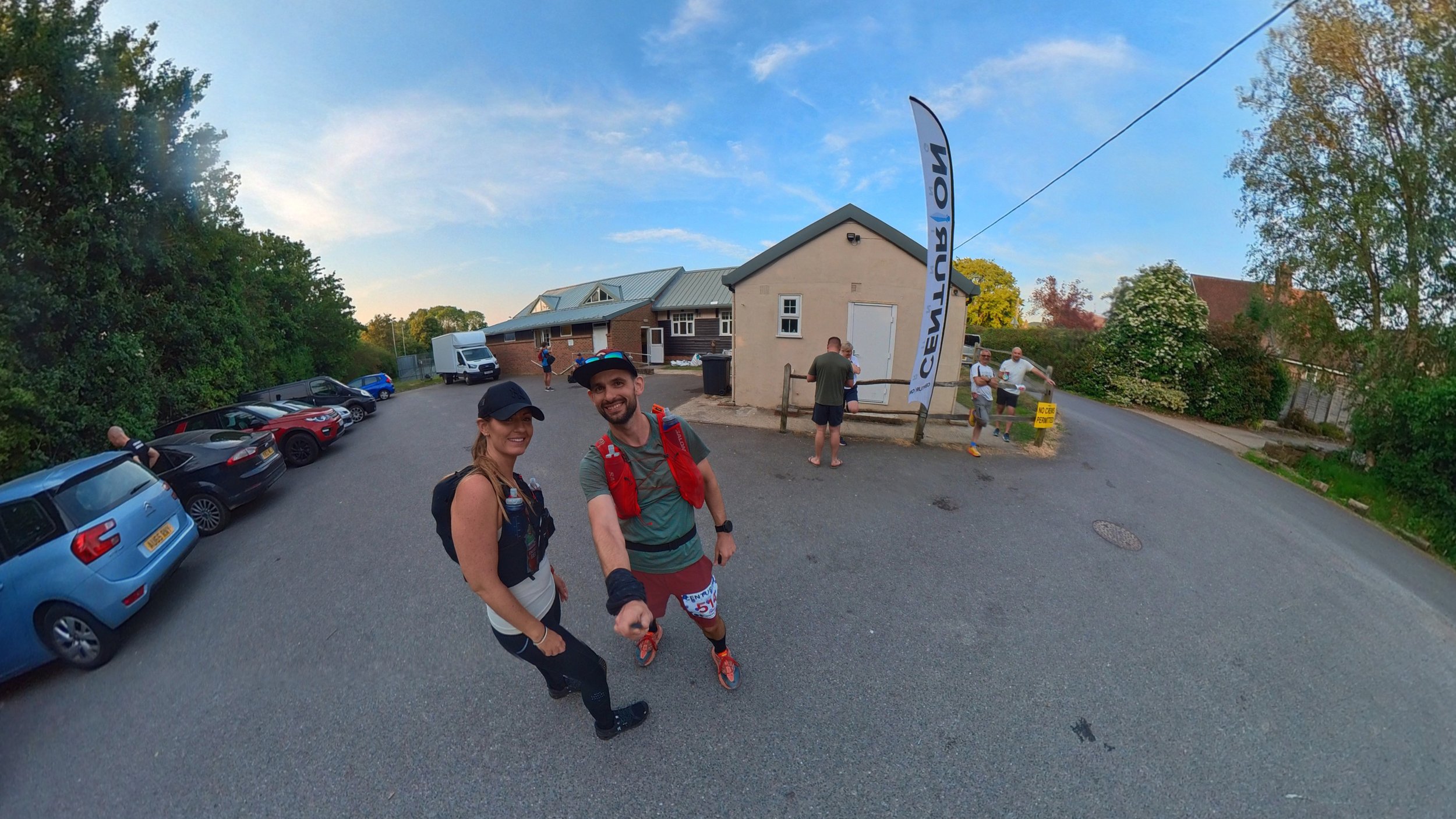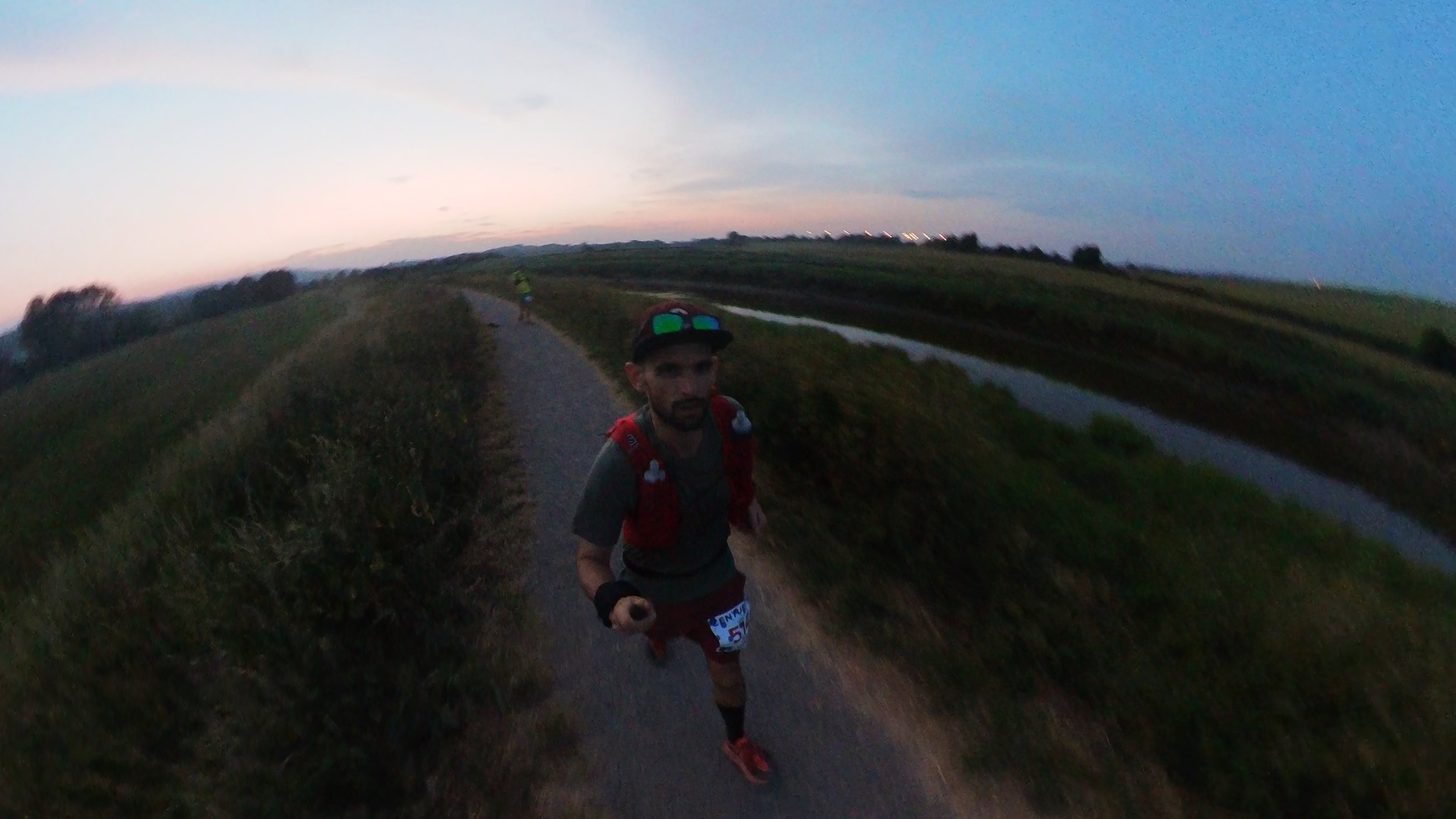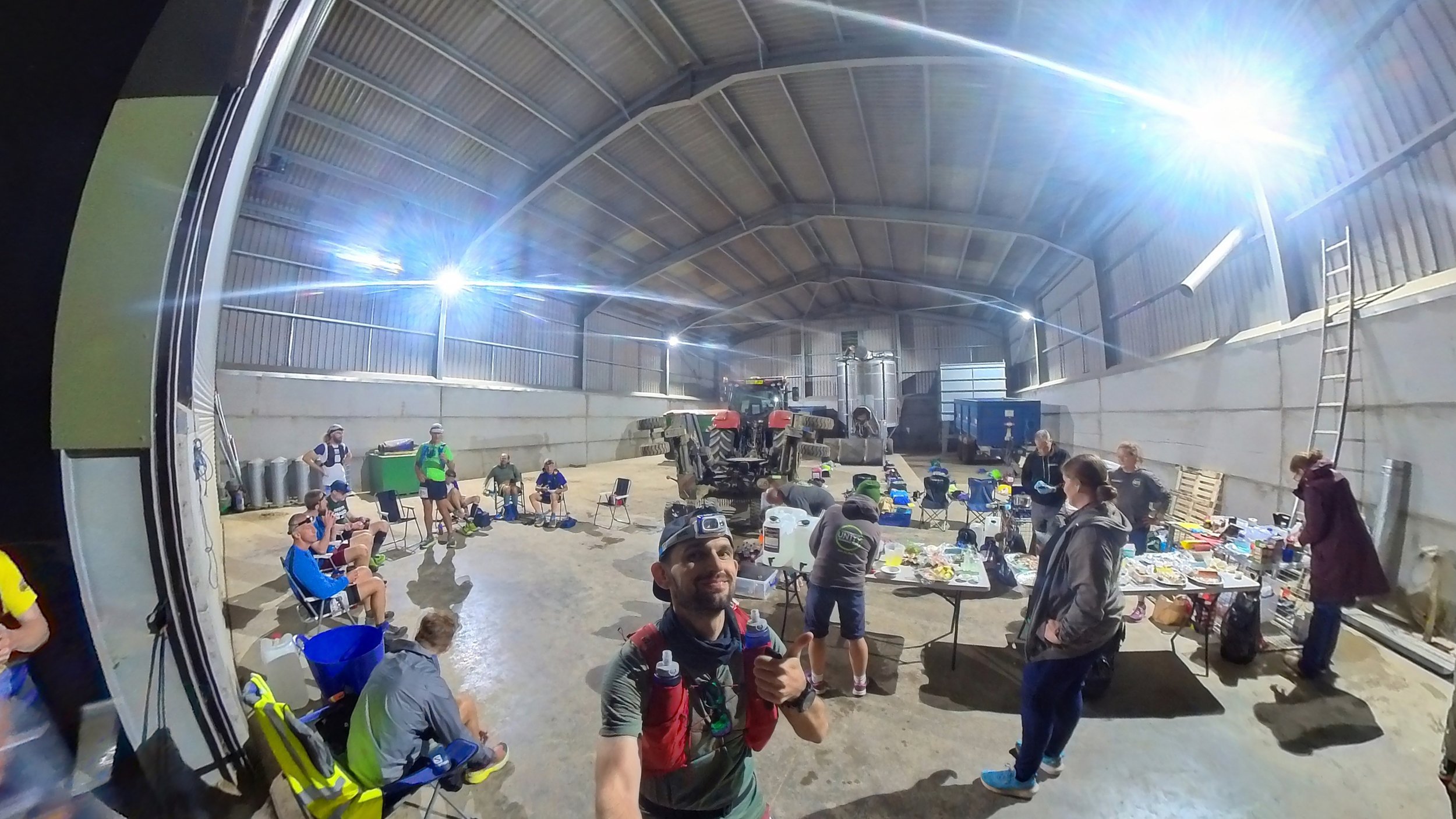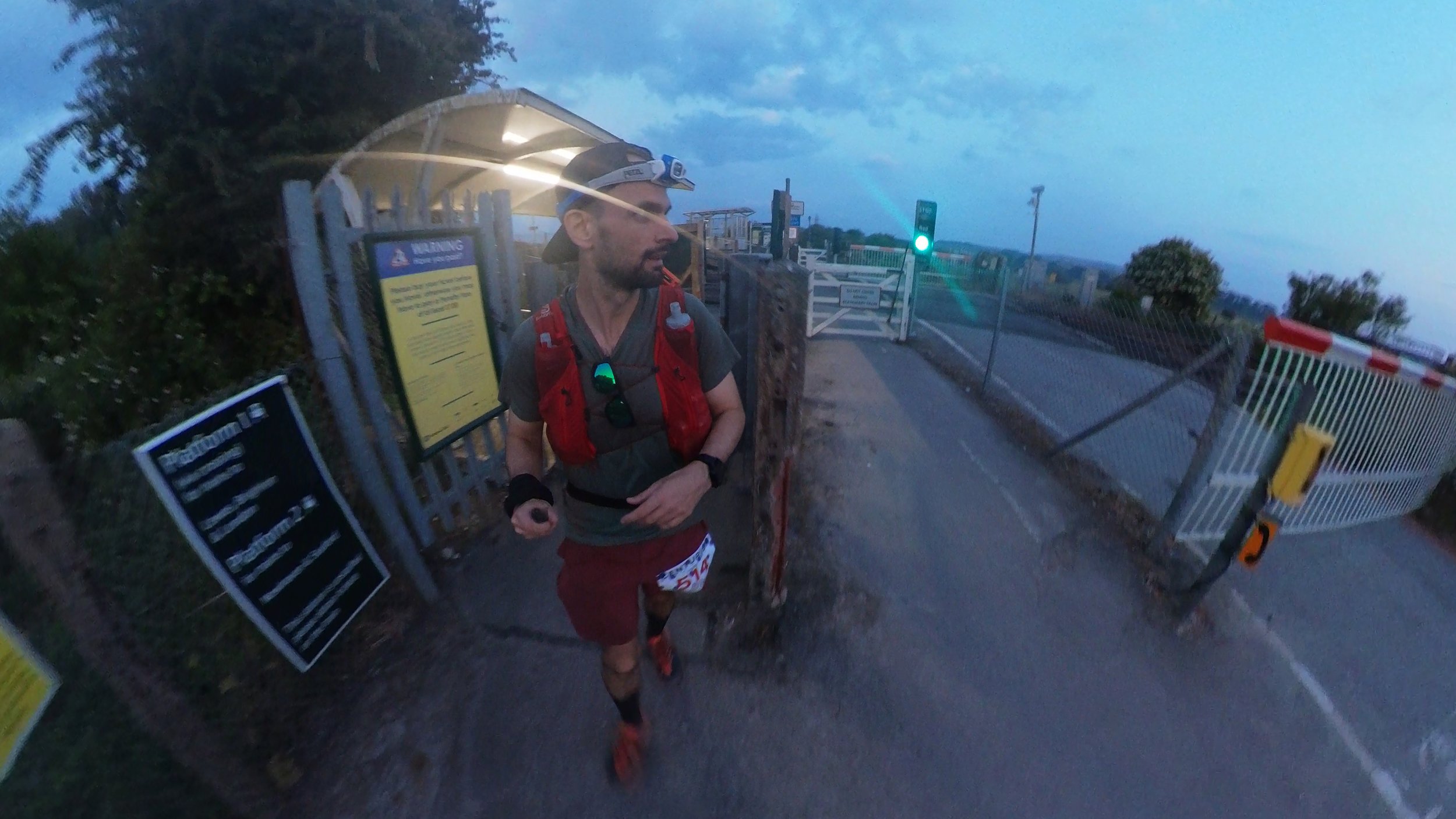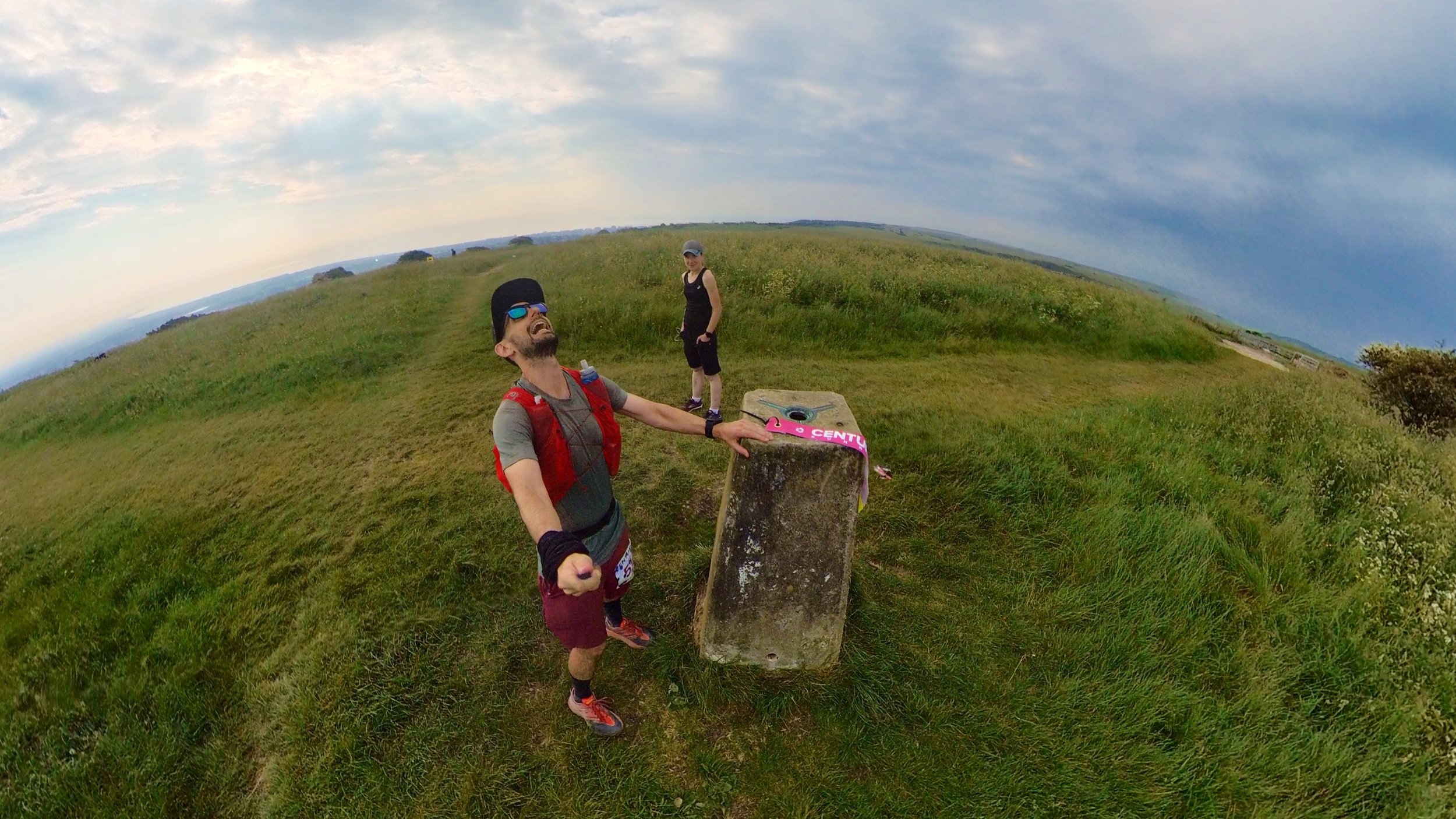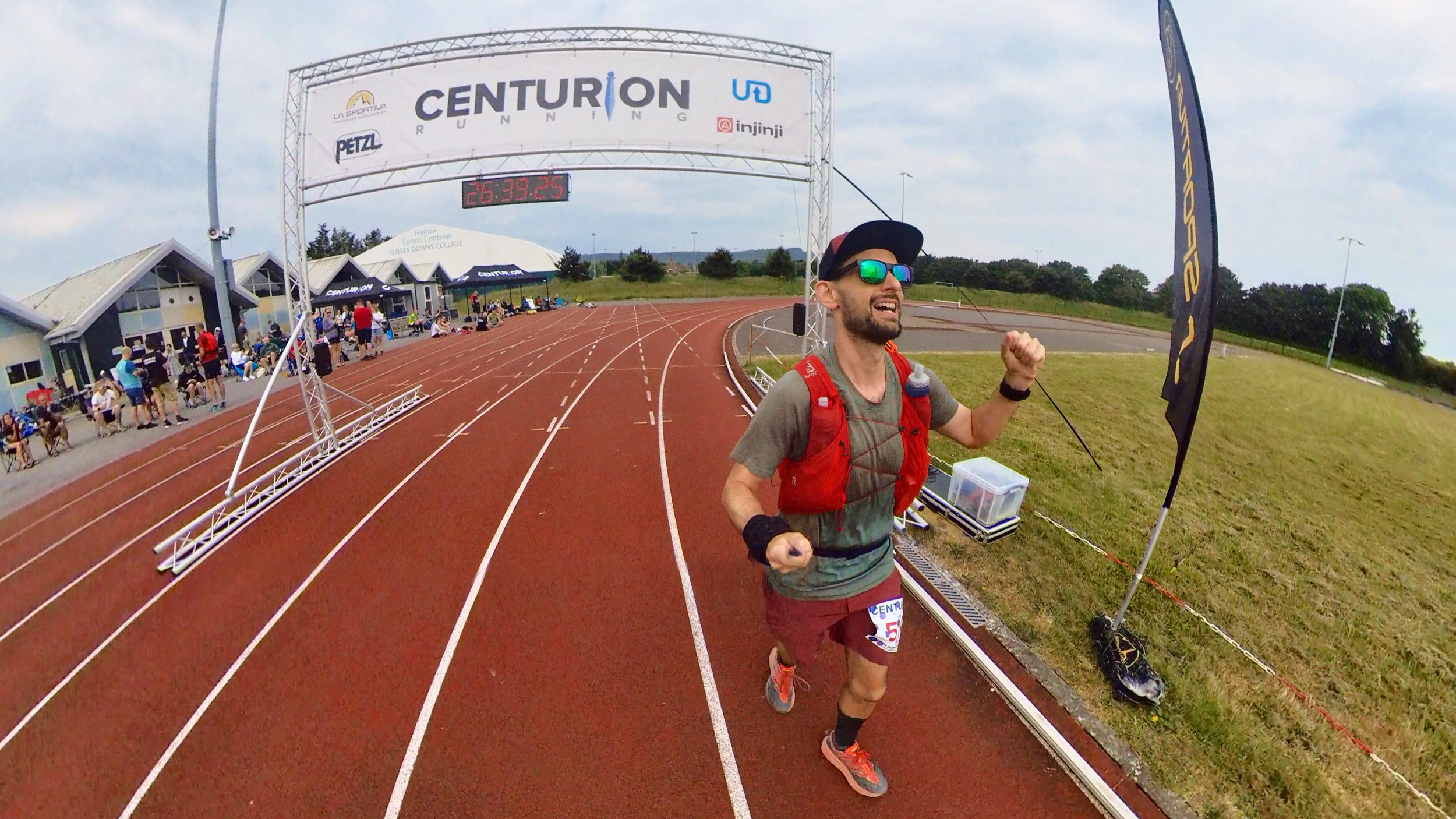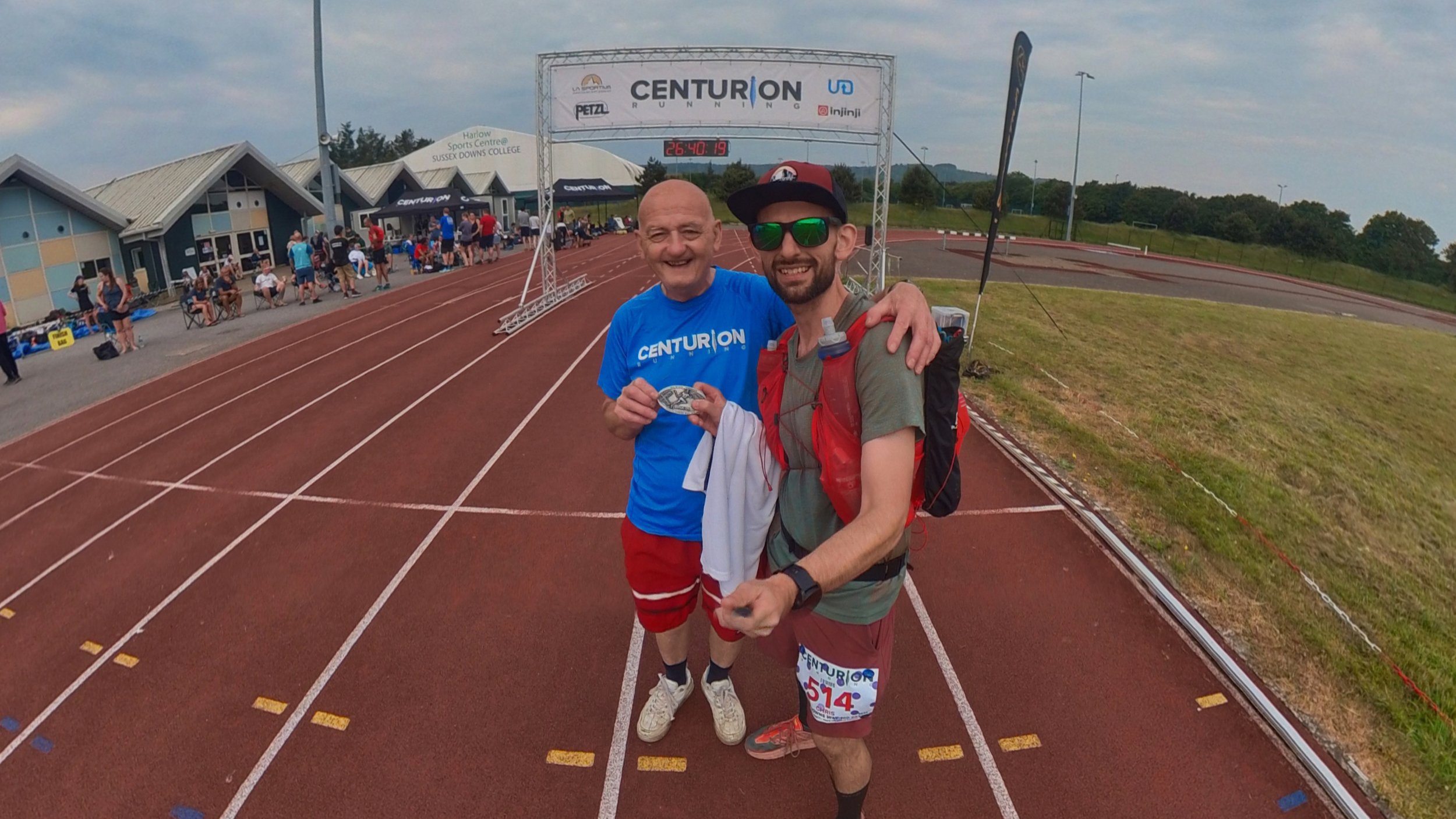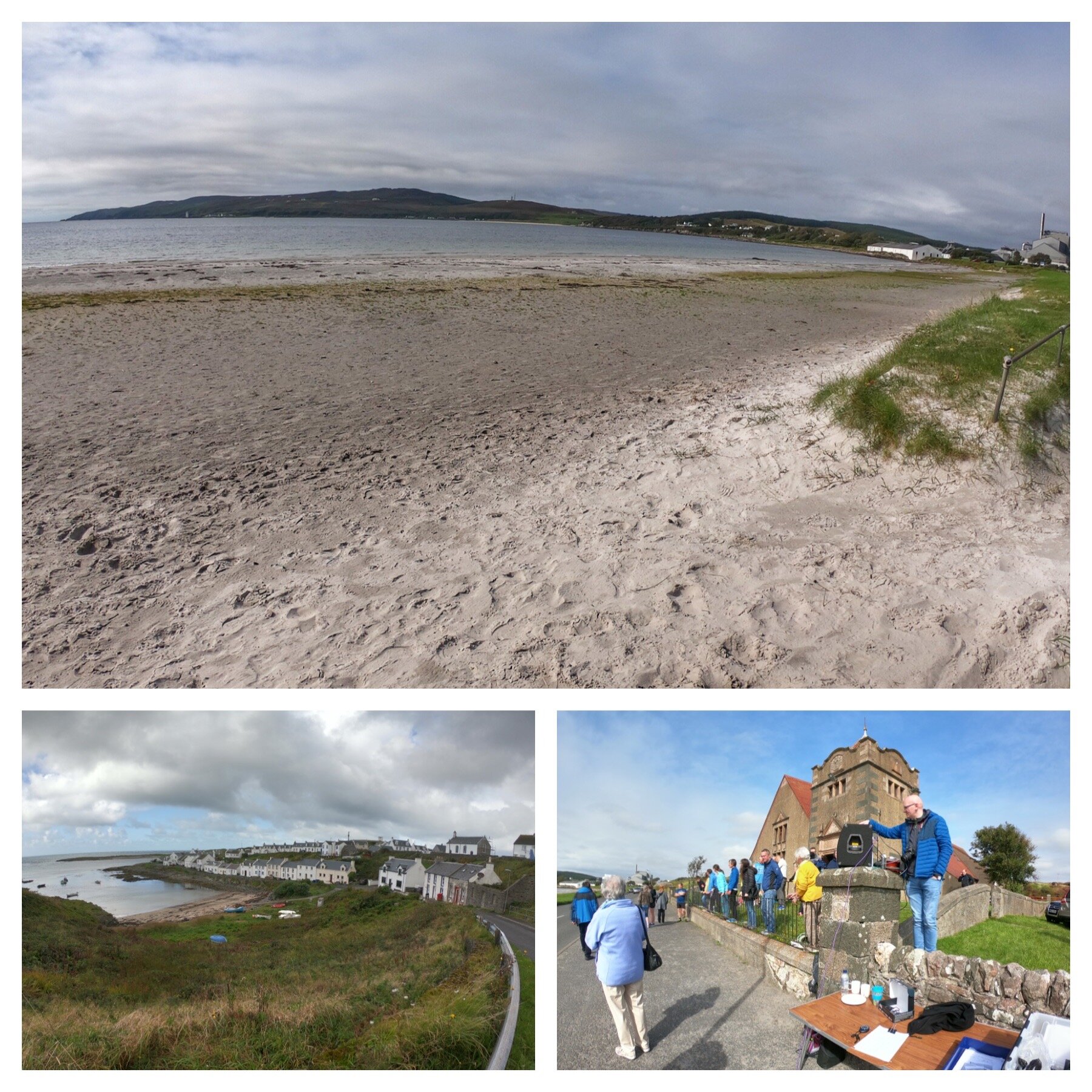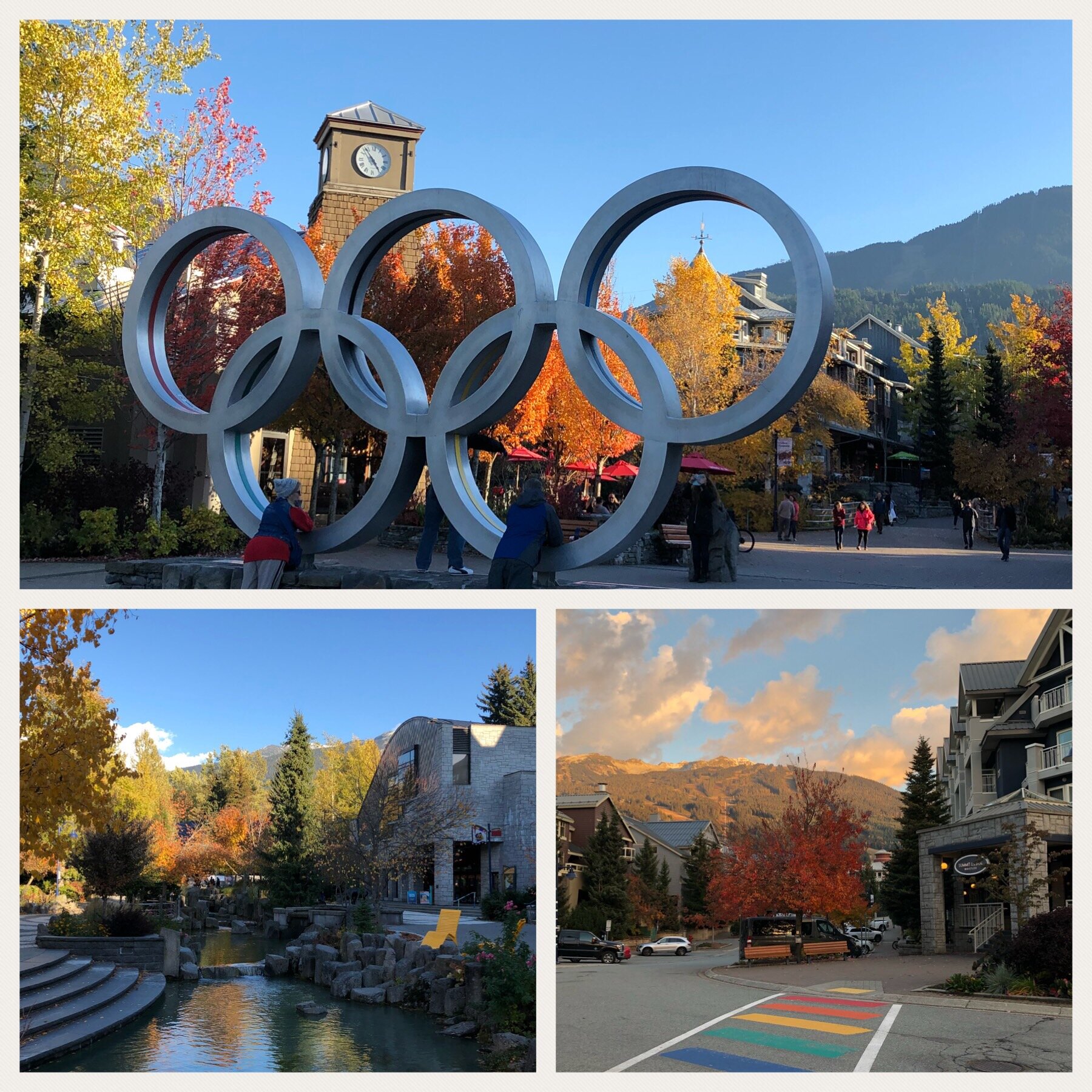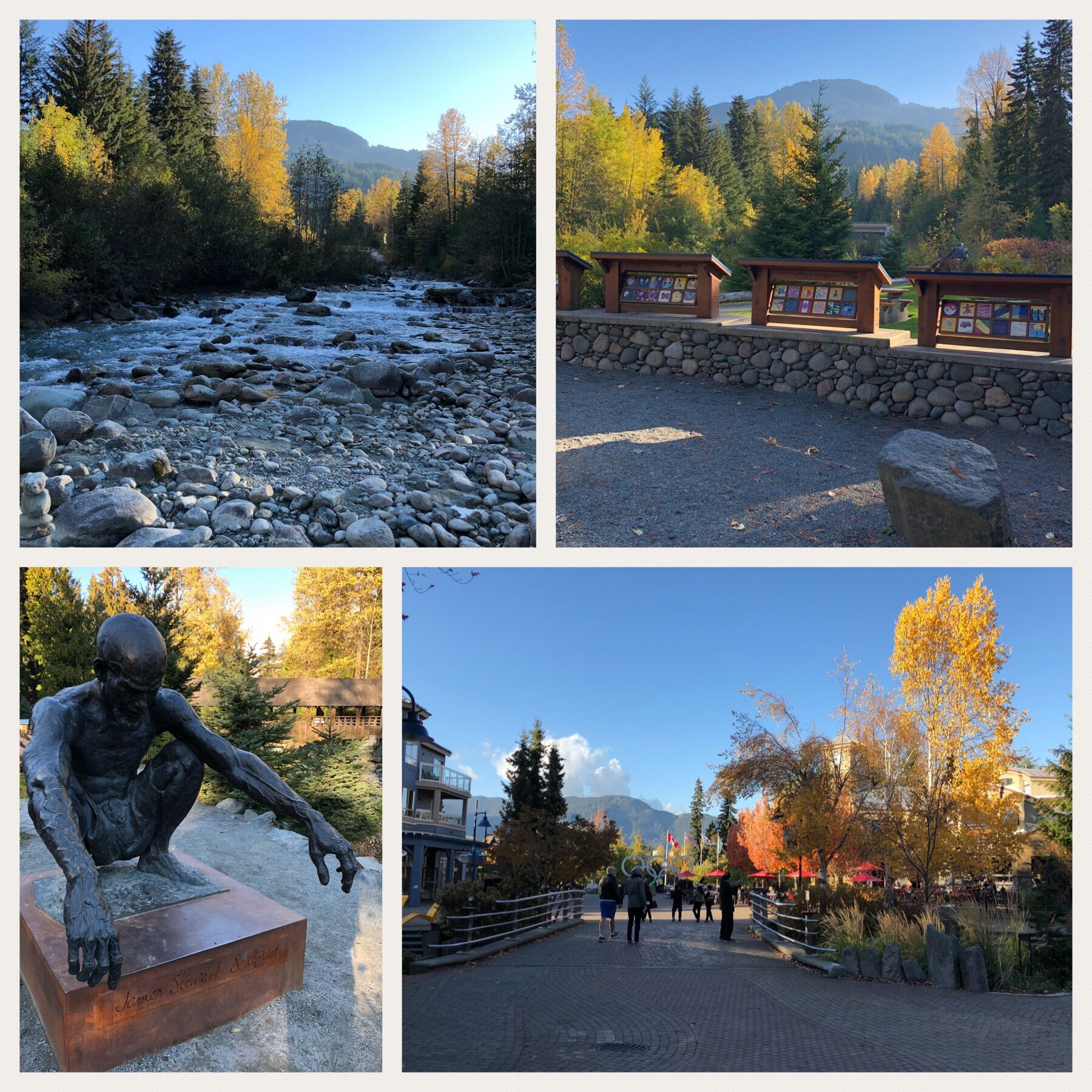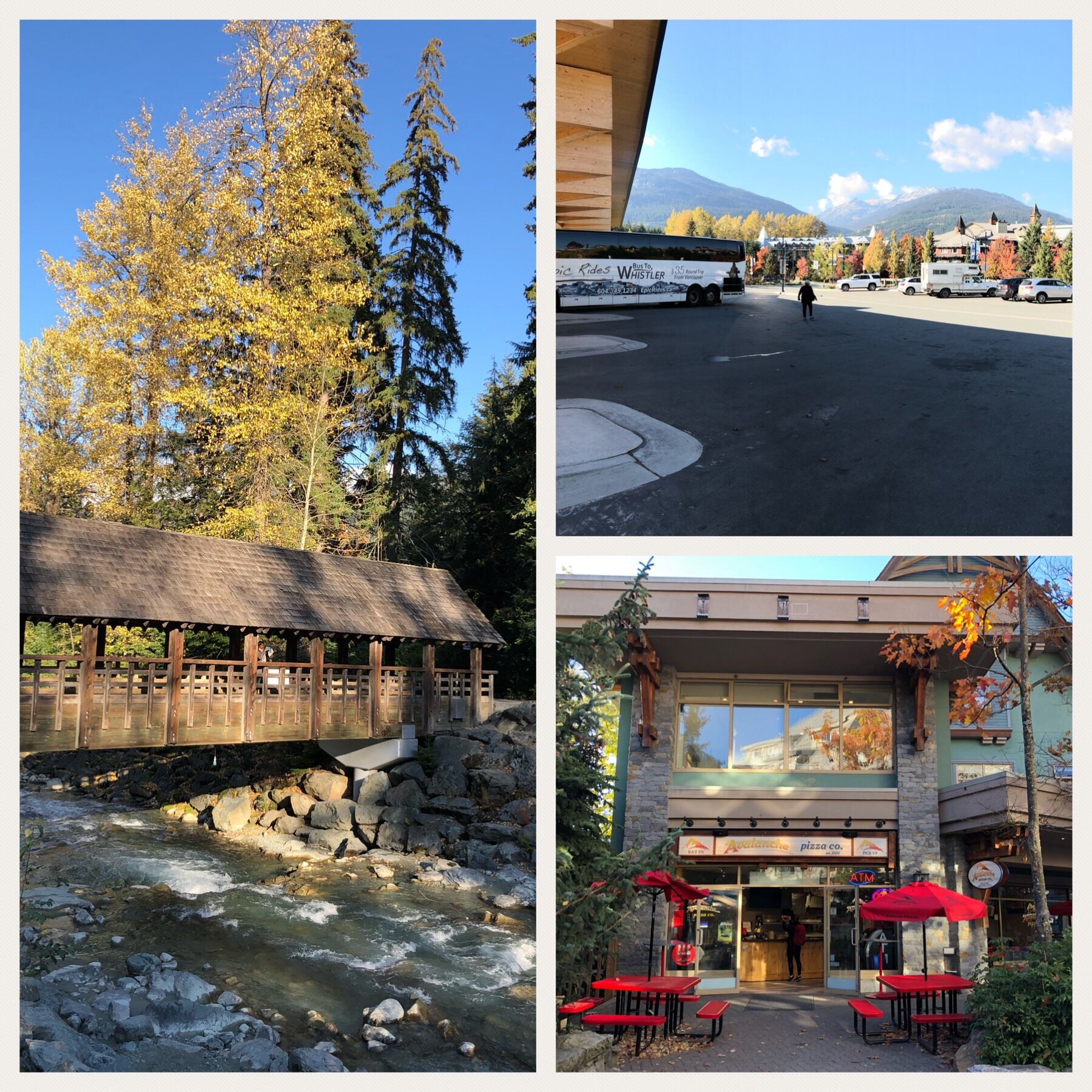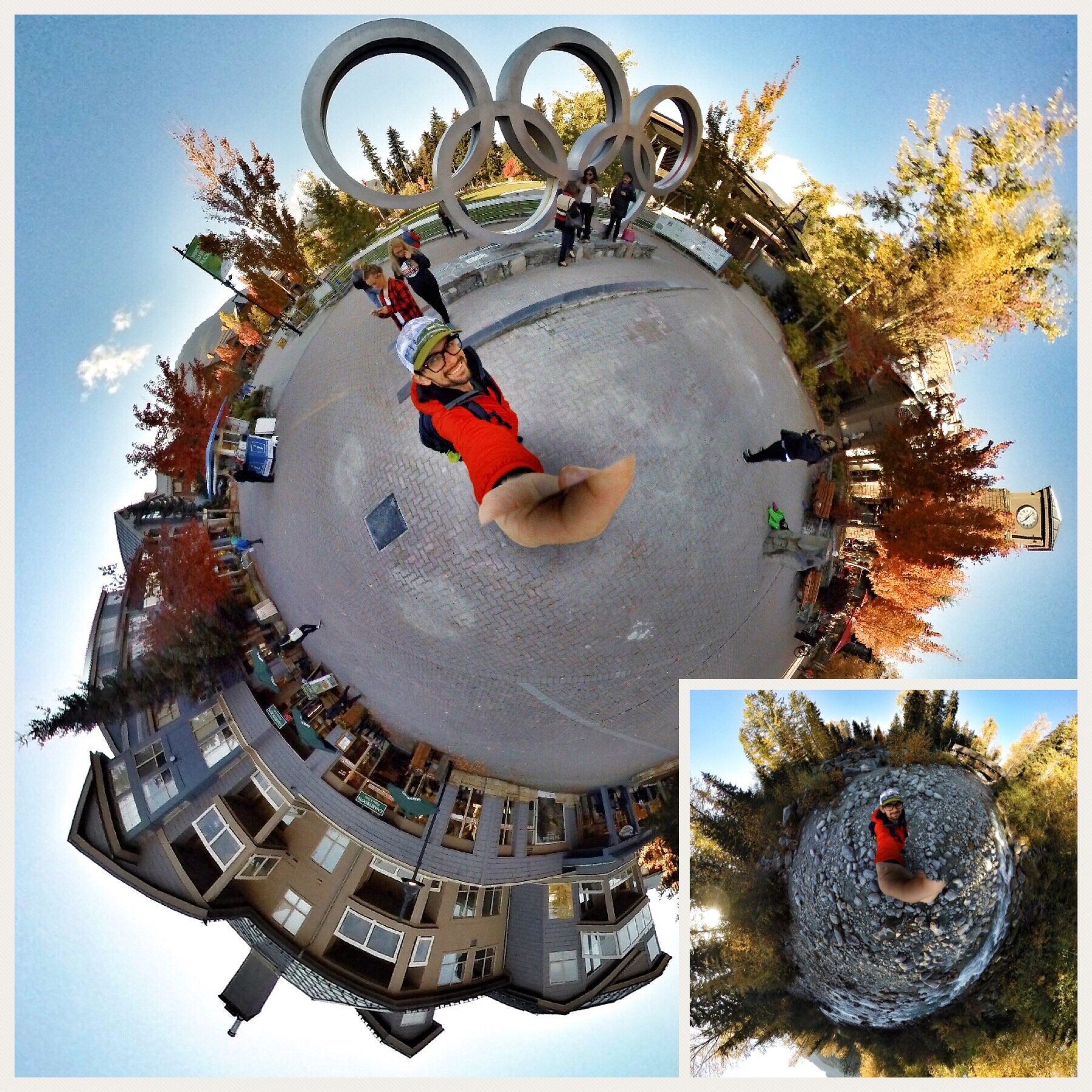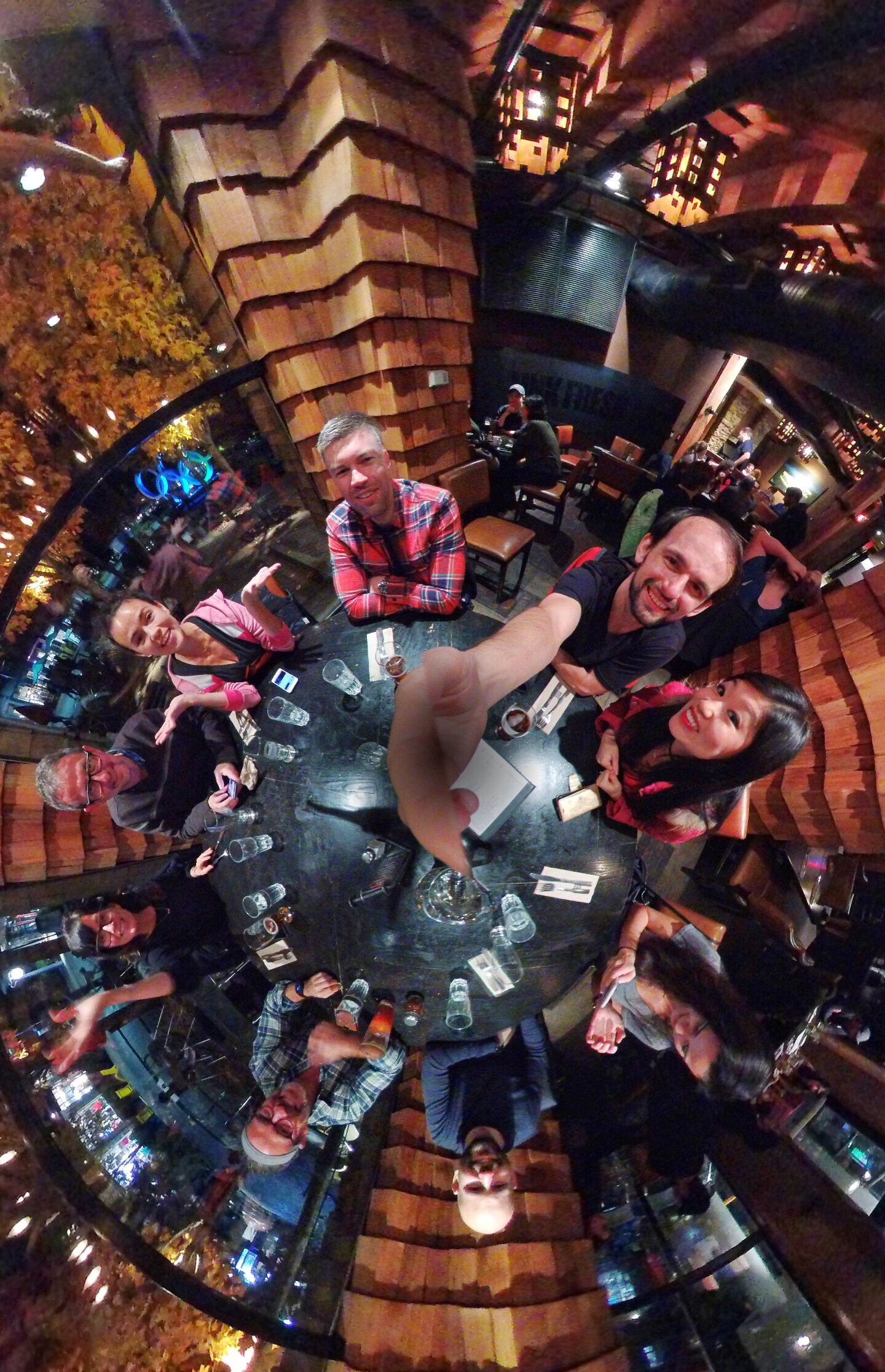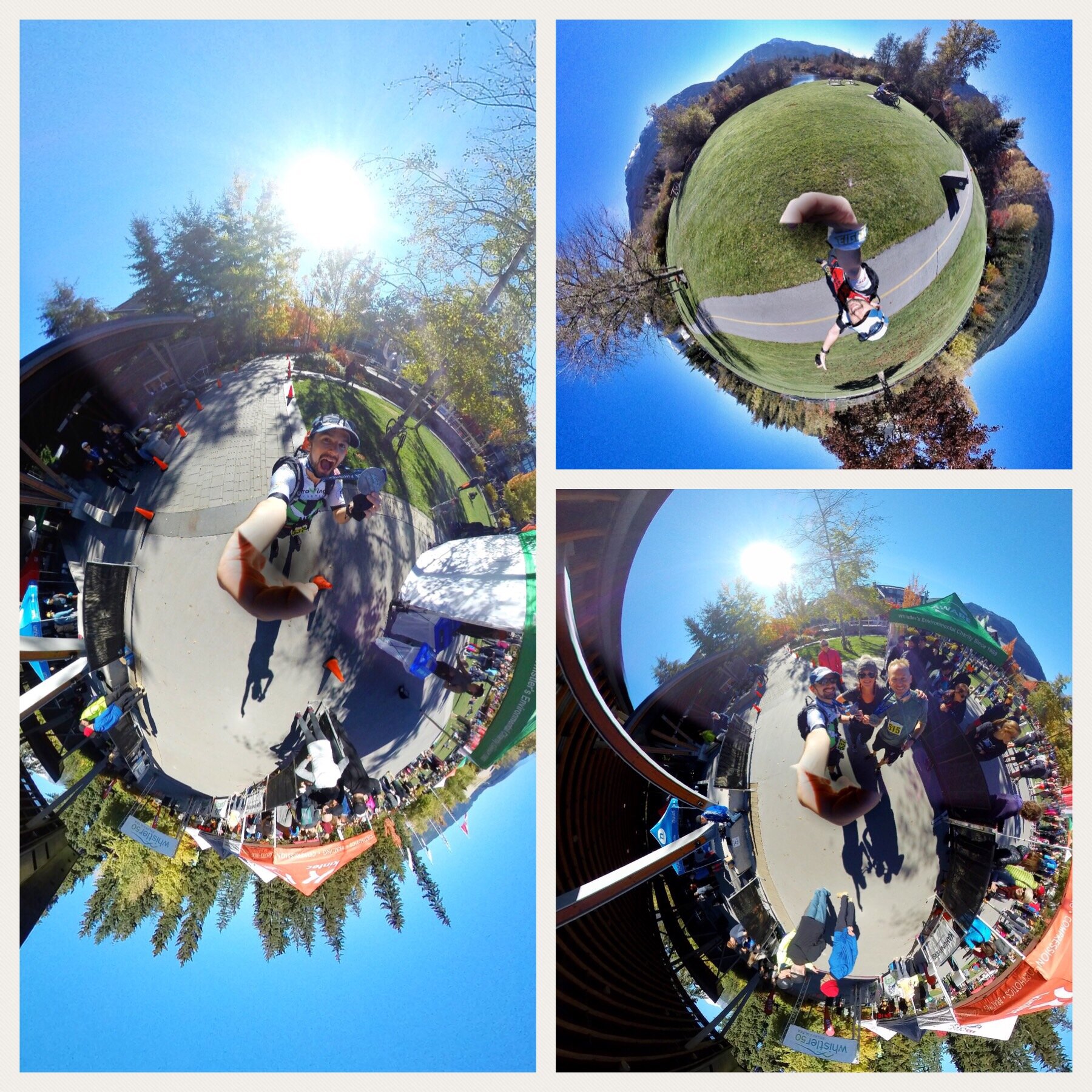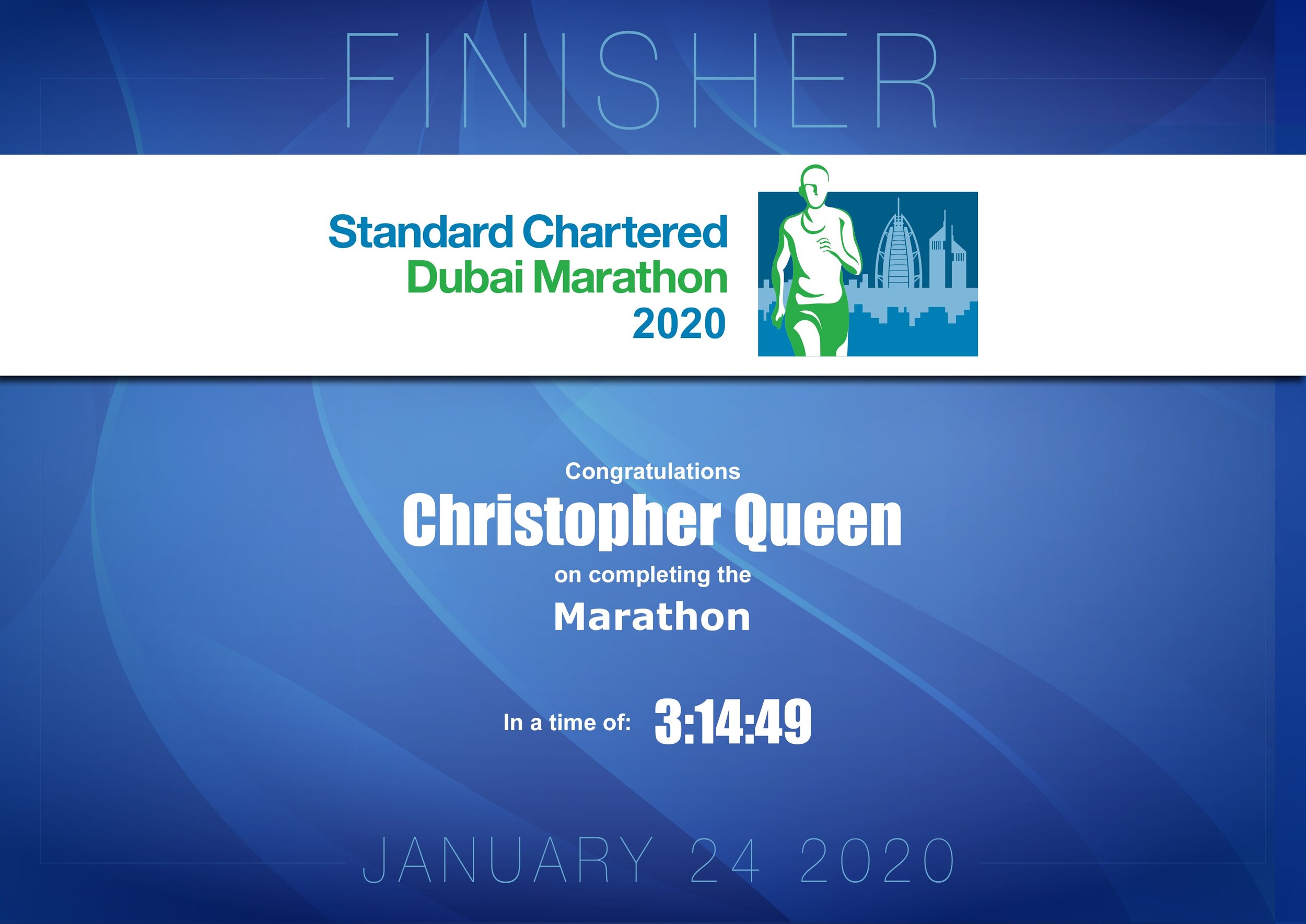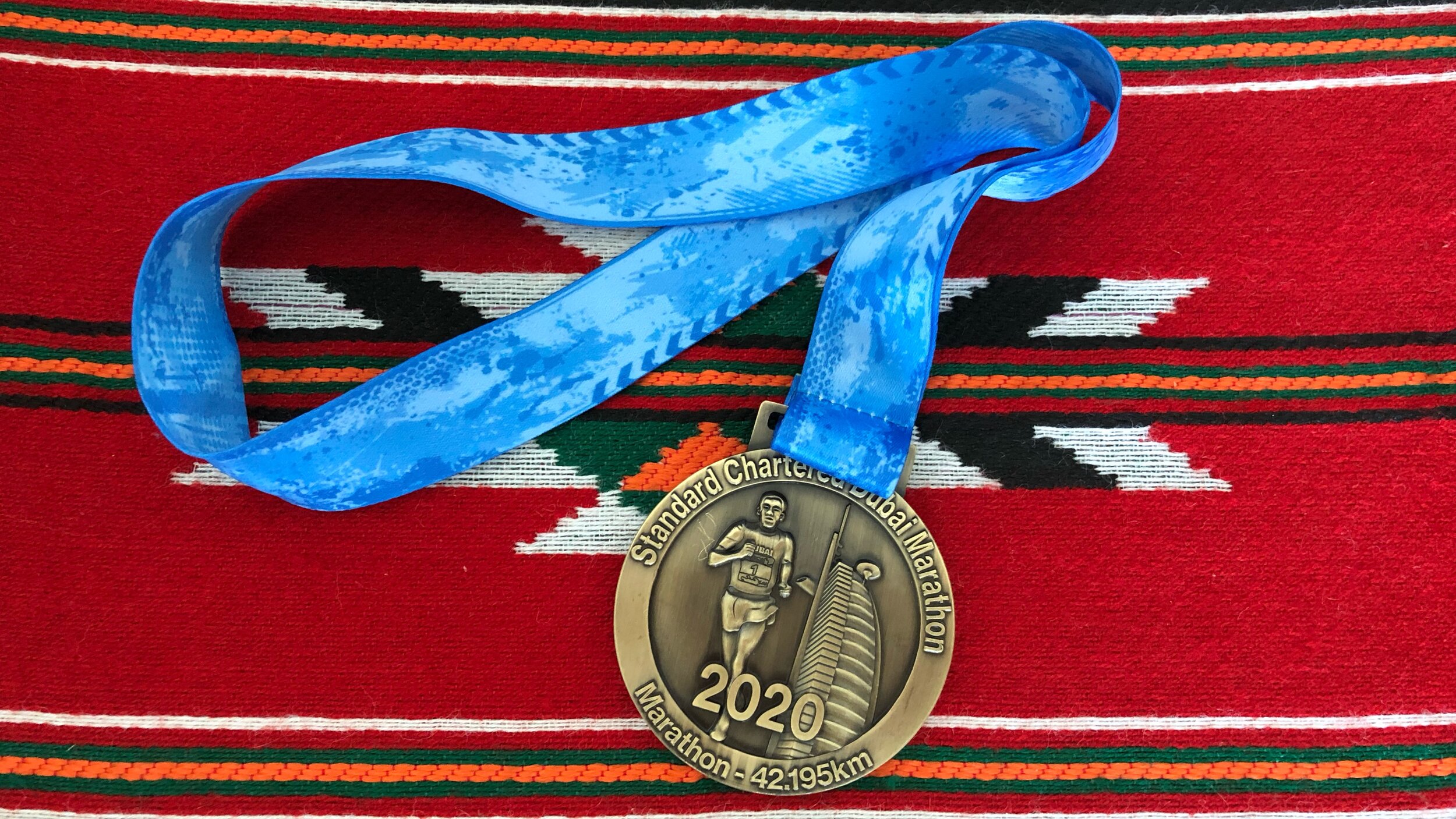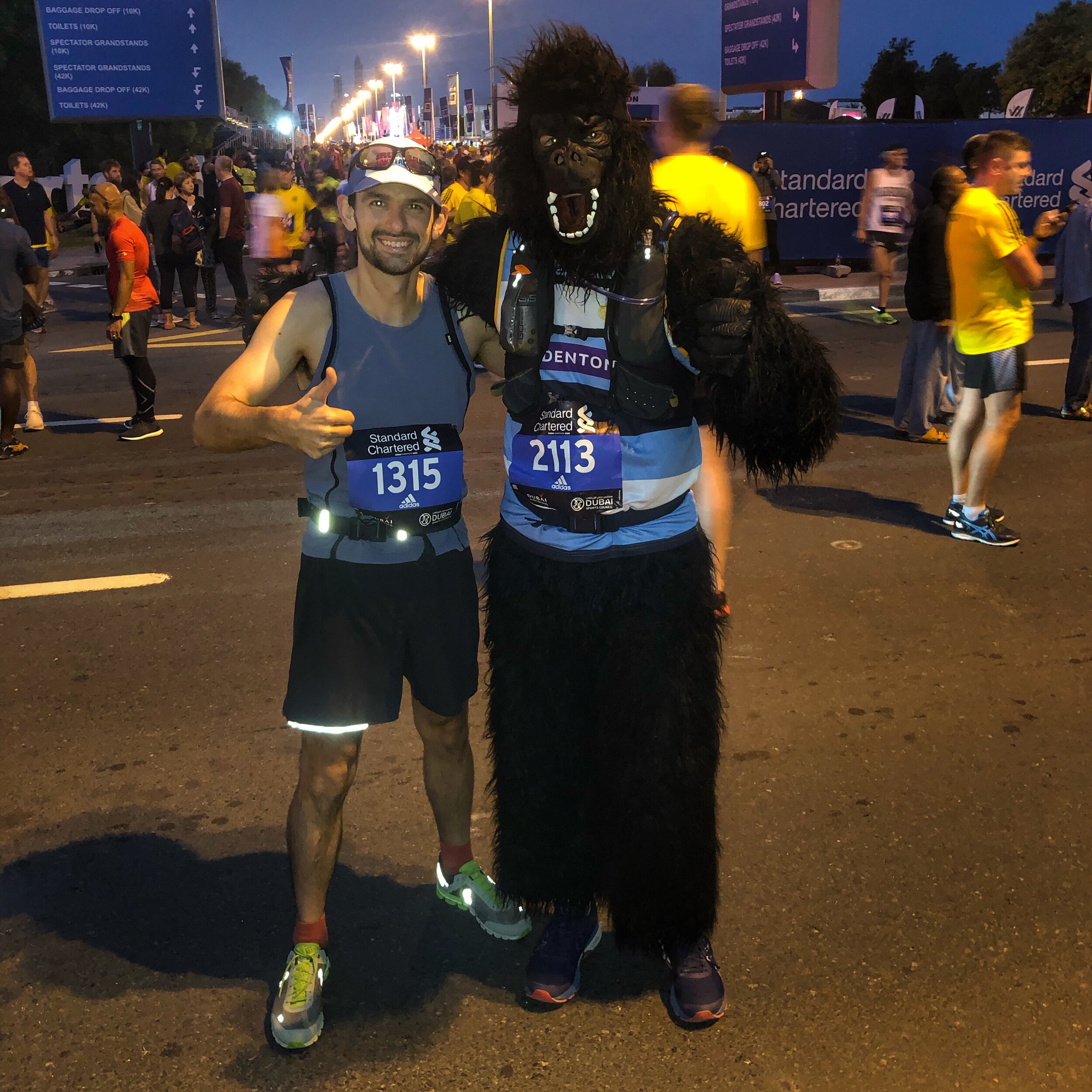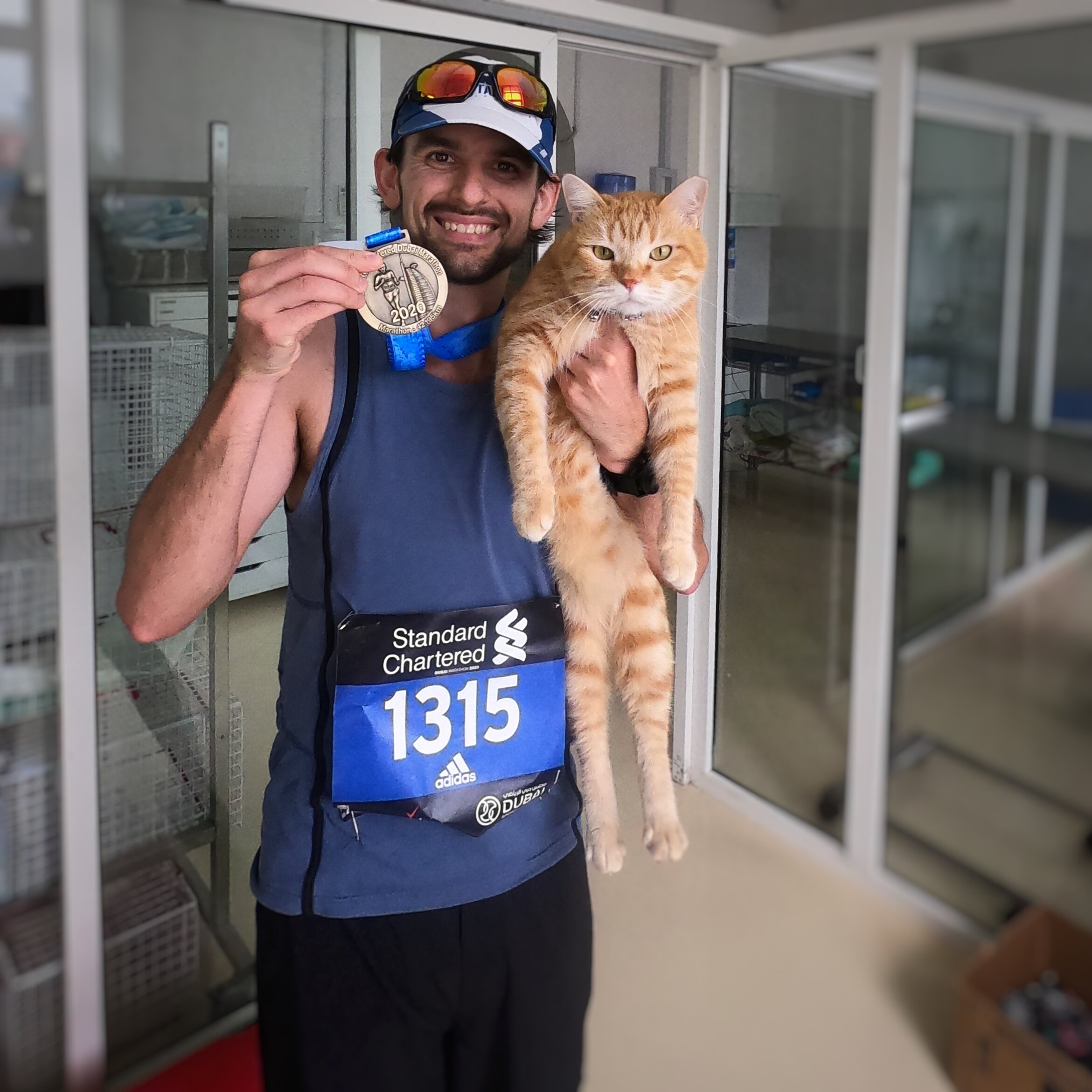Centurion South Downs Way 100
Another 100-miler! The Centurion Running South Downs Way 100 took place over the weekend of the 10th June 2023 and it was a scorcher. A rollercoaster of a race, with epic ups and downs, both mentally and literally given the number of hills to scale and descend. An epic race and one of my most hard-earned buckles to date.
Back At It - 100 Miles
After running the North Downs Way 100 back in 2019 I have to say that I wasn’t really of a mind to return to the 100 mile distance. I would love to say that the NDW100 was fun, fun, fun all the way but a little gander at the video I made of the experience would prove that to be a crock of BS. It was very tough and my finish time of just over 26 hours served to prove that point. 100 miles, I concluded, was rather an insane distance to attempt to run in one go and figured that I’d probably be ‘one and done.’
Well, the funny thing about time and the human brain is that, on the one hand, we are prone to forget all the little details of an experience and event and tend to look back on things with rose-tinted specs, and secondly, endurance events and challenges of any ilk have a natty way of just nestling right into the little cracks in your brain where they sit and ferment and give rise to ideas. “Hmm….. what if I did the South Downs Way 100? It would be nice to ‘complete the set,’ wouldn’t it? It’s meant to be more runnable so it’ll probably be a lot faster and more fun, right?” The second one starts asking questions like these fate is already set.
It still wasn’t certain I was going to do the South Downs Way until the very last minute, for a couple of reasons. First of all, I had relatively recently run the Two Oceans Marathon in Cape Town, putting in a really solid sub-5 hour performance that I was still buzzing off, and so was on a bit of a recovery drive from that, and secondly, I had needed to submit my passport for renewal. If, I told myself, my new passport came back quickly - a far-fetched idea, or so I thought at the time - then I would take it as a sign and enter the race, especially as Sarah, my coach, had advised me that being a Centurion-coached athlete I was essentially guaranteed a spot. I did not expect the UK passport office to knock it out of the park in quite the spectacular way they did and so when my passport came back to me in less than 3 weeks - kudos the UK, not something we get to say very often - it was official: me and the South Downs Way 100 were about to get acquainted!
I went into this 100 miler feeling a lot more confident than I did back in 2019, when the furthest I had run at that point was 85km. Since then I have done the North Downs Way 100, completed the Comrades Marathon, circumnavigated the UTMB route, had a crack at the Cape Wrath Ultra and done the Two Oceans Marathon. Basically, I have done a lot of running over the past few years and so felt that I had a long distance event in my legs and the mental fortitude to be able to get the job done. Besides, the South Downs Way is “much more runnable and faster” than the North Downs Way and so I figured I had this. I knew I was fit enough and so it was more going to come down to whether I was mentally gritty enough on the day.
Planning & Kit
The North Downs Way was a whole new experience and so going into the South Downs Way 100 I did at least have some inkling of what to expect from a 100 mile race, including what worked for me and what didn’t. Having a crew - in 2019 my parents ended up fulfilling this role pretty much by accident - does make a difference, as they can ensure that you have the various bits and bobs that you need at various points along the route, in addition to being on hand to go and fetch some item, whether it be equipment or nutrition, that might make sense on the day. Mum was unfortunately unable to join this year on account of a pre-booked commitment but dad was up for it, as was my sister, Amanda, who also said she’d be down to do some pacing, having commented that it seemed like it would be “fun” when I mentioned having seen other runners with their pacers at the NDW100. She was also going to bring down my two nieces for the weekend so we had the makings of a fun family weekend, one where Uncle Chris does a crazy thing by running from Winchester to Eastbourne in a ‘wunna.’
Documents were prepared, detailing the various crew points and what kit etc they would have with them, whilst I planned out my race by banking on an average pace of about 8km per hour, working out the time I expected to be at each key location. This included a nutrition plan, essentially telling me how much carbohydrate, salt and fluids I should aim to consume per hour, and was printed and laminated so that I could carry it and refer to it throughout the race. This did actually make a difference especially during those parts of the race when my brain just wasn’t operating optimally.
Nutrition has always been my stumbling block and specifically ensuring that I consume enough energy to sustain a consistent effort. Sarah and I also concluded that in previous races, such as the 82km ultra in Al Ula, where I hit the wall at about 60km, I hadn’t consumed enough salt. As such, salt tablets were purchased and electrolyte top-up incorporated into my overall plan. As in previous events, the foundation of my nutrition plan was to fuel mainly using Tailwind - the aid stations were supplying it but I intended to top that supply up - and Hi5 gels, which worked for me at both the Comrades and Two Oceans marathons. As such, what seemed like a metric ton of both Tailwind and gels were ordered online and delivered back home in the UK, from where I’d pick them up before heading to Winchester for the race.
Last year, when I headed to Scotland for the Cape Wrath Ultra, the UK experienced unseasonably wet conditions. This year it transpired that the weather was going to try something completely different as a heatwave was instead predicted. “Hmm….this could play to my strengths,” I thought, although I also know how punishing lengthy periods of time out in hot, sunny weather can be and so was quietly hoping for there to, preferably, be some degree of cloud cover on the day, especially as the South Downs Way route was not known for being very ‘under cover.’ In typical UK fashion, the forecast seemed to flip-flop between “very hot” to “mild” over the days leading up to race weekend, with thunderstorms even predicted at some point during the race. In the end what we got was a classic “scorcher,” which played the key role in how many runners’ race panned out.
Two bits of additional kit that I purchased very last minute, and was incredibly glad to have done so, were a pair of SunGod Ultras, a rather 80’s looking wall of UV-blocking eyewear that did a great job of covering and protecting much of the upper half of my face during the day, and a desert cap, the one with the flappy sides and bit at the back that covers your neck. I was fortunate enough to be able to get both literally the day before the race and am convinced that they played a significant part in me avoiding full-blown sun-stroke.
Winchester - Ye Olde England
Dad and I headed down to Winchester a couple of days before the race as I wanted to avoid any undue last minute rushing and be able to relax a little beforehand, in addition to getting to explore Winchester a little. I booked a stunning little AirBNB in Twyford, a charming village on the outskirts of Winchester, arriving Thursday evening. On Friday we headed into Winchester itself and spent the best part of the day in tourist mode, starting with a hearty breakfast at the Ivy, for a touch of class, before exploring the main sites of the city, from The Great Hall to Winchester Cathedral and the statue of King Alfred the Great. Given how important carb-loading is before a big endurance race plenty of time was carved out for the essential task of eating well, and dad and I left the city feeling culturally and gastronomically sated.
A short drive from our AirBNB was Matterley Bowl, the site of the start line and where we were to register, picking up my race number (514), complete with some additional lilac spots, which I was informed denoted me as a Centurion runner - no pressure there then! There was a demonstration of just how hot and dry conditions were as we drove down the farm track towards the bowl, chalky dust instantly kicked up into the air by the cars in front, rendering the air almost foggy. It did make me chuckle when I saw one car heading out with it’s roof down and it’s occupants looking very much dusted and somewhat like they’d just spent a rather debauched weekend in Vegas partaking in a little too much naughty salt!
I was also given my GPS tracker for the race, which was taped onto my race pack, before dad and I headed back to wait for Amanda and the kids to arrive, and finalise things for the next morning. As far as settings for a race start went, Matterley Bowl was stunning: a truly English countryside vista if ever there was one, with freshly cut rolled bales of hay, a couple of tractors in view and all closed in by a sweeping bank of rich green grassland.
RACE DAY
Needless to say, it’s impossible to get anything approaching a “decent night’s sleep” immediately before a big race so when the alarm went off at 4am I was already awake. Having set out all of my gear the night before, all I really needed to do was shower, 3B and BodyGlide myself up, tape my feet up - in hindsight, I should have taped up more of my feet but it actually takes way longer to do than you think and so I just ran out of time - and then EAT! Amanda kindly drove me down to the start and we arrived literally 5 minutes before the start horn went off, so cut it a little close. However, the upside was that it curtailed any last minute nerves and the stress that ensues from hearing the kind of chat that you hear before something like an exam: “how was your training?” “Oh, I didn’t really train!” Before they then go and smash it out of the park. It’s weird how we do that as humans, isn’t it?!
Once again, I opted to take along a camera, this time actually packing both my GoPro and my trusty Insta360 OneX2, which has proven to be the perfect camera for running events like this as it not only fits perfectly into my race pack side pocket, but captures literally everything meaning I can just pick and choose the shots after the event. I have also mastered the skill of deploying the camera on the run, packing it back without having to break stride. Getting to look back on my NDW100 experience courtesy of the footage I filmed was not only a fun momento of the event, and allowed others to ‘come along for the ride’ but also served a more useful role of being great race-review material. It is inevitable with a loooooong race such as a 100 miler that little details, and sometimes whole sections, of the experience just get forgotten or misremembered. Having a camera on hand means that there is a record of the ups and downs, which makes dissecting the race and learning lessons from it so much easier. Plus, it also records for posterity some of the comic parts, such as me ‘seeing’ an ostrich in a field, only to realise moments later that it was, in fact, “just a path.”
The going was great for the first couple of hours and I was actually about 45 minutes ahead of schedule as I reached the first aid station. I wasn’t even feeling like I was pushing it too hard and so this buoyed me as I considered the prospect of posting an even faster time than the 22 hours I had predicted… But, the hot conditions that had settled over Southern England had different ideas.
My first concern was that despite being mindful to keep fluids going in and taking salt tabs every hour, which coincided with drinking about 500mls of fluid, I didn’t need a piss until about the 25km mark (QECP) and even then it was pretty concentrated, which didn’t feel right! How was I not better hydrated?! My salt intake was pretty high and I didn’t feel like I could drink any more fluids without risking a huge fluid filled stomach and vomiting! I called Sarah (my coach) at this point to discuss the situation and she said I would need to adjust the salt intake according to the conditions and how I was feeling, so more if any dizziness, tingly skin, headaches etc. My big concern was renal failure - I definitely did NOT want to risk that! If I’d have really thought things through though I’d have realised that the issue wasn’t so much fluids but more HEAT. I needed to actively cool myself down, something that I must have actually known at a sub-conscious level as I’d messaged my crew to ask them to try and pick up some ice. The eventual race winner, who had a blinder of a race, enacted a very effective active cooling strategy, stuffing his race sleeves with ice at crew stops and dunking his head in water at every possible opportunity.
The climbs and descents very quickly revealed themselves to be pretty steep as well! Most were on good paths but some were very uneven, hard and challenging on the legs, especially the quads and knees. Hmm… those poles were starting to look more desirable, although I’d opted to leave them with my crew, so would not be getting access to them until the halfway point.
It got progressively hotter as the day wore on and despite doing what I could to cool myself at the aid stations and keeping fluid and salt and energy going in I soon baked! One of the issues was the fact that the South Downs Way does not really have any cover and so we were exposed to the full glare of the sun, coupled with the fact that it is chalky terrain, meaning the sun reflected off the ground and back up at us, much like it does on water. So, cooked from both angles: great for a rotisserie chicken but not so much for a ultra-runner!
There was a cafe just before the Cocking aid station at the 35 mile (56km) mark, which felt as though it coincided with the peak of the mid afternoon heat and was a very welcome respite. I took advantage of having my ApplePay on me as I ordered a slushie and ice lolly! Bliss! Also, just to get some shade. As much as it was tempting to spend more time in that refreshingly cool refuge, I knew that I needed to haul ass and get moving. That’s the thing with long ultras: there will be plenty of points where the thought, “hmm…I could just take it easy here and walk, or even stop for a bit” becomes like a siren call in your head. Resisting the temptation to given in to these thoughts is one of the biggest challenges when it comes to ultra-running.
As I left the Houghton Farm aid station (45 miles/ 72km) I opted to pop in the old ear buds and fire up some tunes, with The Mysterines setting an upbeat mood as I headed towards the Arun River crossing. I was feeling pretty pumped I must say and confess that I was definitely engaging in some furious air drumming as I ran along, needless to say looking like a proper head case to anyone running behind me at that point. This mood was short-lived though.
As I was scaling the next big hill (now, forever christened Chunder Hill) my stomach just decided out of seemingly nowhere to invert and there was nothing I could do but ride the vomit comet, feeling my fuel gauge go from “something” down to “absolutely nothing.” Crap! Not a good development, especially as I knew from previous experience how hard it is to claw it back and keep going after bringing everything up like that. Wow! This race, or more to the point, the conditions, really were kicking my butt!
I mostly walked the next 15km or so (might have been less?! Brain wasn’t really working), as it coincided with the hottest part of the day and I felt like I had NOTHING in the tank at all - I was back feeling like I did at 60km in Al Ula in Saudi Arabia. Like a wisp of a man mustering everything I had just to resist the temptation to curl up on the grass and just stop! I found myself looking at sheep sitting under a big tree with some intense envy! I really began to doubt myself at this point and couldn’t have said whether I was going to be able to finish or not. That’s how utterly shite I was feeling. By the time I was approaching the actual halfway point I was moving on pure fumes and had Amanda joined me at Kithurst Hill (the official halfway point) then she’d have been less my pacer and more my chaperoning carer just trying to coax me to the Washington aid station. When spectators congratulated me on a “great effort,” it was as much as I could do to just wispily mutter “thanks.” There was another cafe (same branding as the one before, at Cocking - some kind of Cycle Club) on the route and so after filling up with water I ordered another slushie, which I sipped on for the next few kilometres. Anything to just keep the fluids, electrolytes and energy trickling in.
On the way to Washington - by now I was about 2 hours behind schedule, so my race plan had been completely torn up and now it was about gritting this out - there was a small crew point at Kithurst where a very very nice lady took my empty slushie cup and then another lady sprayed my face with cold water and popped some ice on my neck. Clearly seeing how f****d I looked she kindly guided me to her and her team’s car, encouraged me to sit down, gave me some Coco Cola, Gaviscon tablets, mini cheddars (for the salt) and then a bit of sausage roll, “for the salt and fats.” I nibbled away at that before I started to feel a bit more human and got underway again. What heroes! I reckon thanks to that team and their kindness I made it down to the Washington aid station without collapsing and it set me on the path to recovery for the next part of the race. She also gave me a couple more Gaviscon tablets in case I needed them later, which I did the following morning, when I started to get that all too familiar feeling of nausea encroaching. Thankfully after chowing them down I was able to avoid another chunder episode.
The Kithurst Hill Heroes
I made it to Washington aid station feeling utterly spent! I was fully of the mind that I was probably beaten and that I’d be calling it a day at this point. “Well” I thought. “It was a long shot and I hadn’t really trained specifically for it - even though I had really; I was definitely race fit - and 100 miles is an insane distance to try and run, and……” So many reasons and justifications I was giving myself to just make it all stop. “If I stop now then at least I can spend the next day with my nieces and it’ll save Amanda having to pace. But then again, won’t she be disappointed that she’s come all this way to pace me and so if I stop now it’ll have been a waste of time for her.” What an absolute bunch of mind-fuckery at play! As Sarah correctly said though, all it meant was that my stretch goal was no longer in play, so the objective was now simply to finish and to do so before the 30-hour cutoff. That’s the nature of these endurance events: you make plans and then adapt as the situation, conditions etc change. It’s a great metaphor for life in general: sometimes shit just gets in the way of best-laid plans. What was I going to do? Get pissed off at the weather?! 😆 Of course not - that’s just the way shit panned out: the race coincided with one of the hottest days of the entire year so far. What to do?!
So, as it turned out, an hour (and a bit) of rest, a couple of bottles of Lucozade Sport and a small bowl of pasta was what I sorely needed! I also tended to my quite sizeable heel blisters, draining them much to the disgust of Amanda, before applying a dressing to each and taping over them, which whilst it did not dissipate the discomfort did at least cushion them a bit. Blister care is something that I learnt from the Cape Wrath Ultra and thanks to that race I had a decent blister kit on hand.
A change of T-shirt and socks helped dissipate my overall feeling of ickiness and I also swapped out my hat for my normal cap, retiring the desert hat, in addition to donning my more normal pair of sunnies for the final couple of hours of sun. The Ultras had served me very well today! A good purchase indeed! I had initially intended to change out my shoes, swapping the Hoka Speedgoats for my trusty Salomons but as soon as I put them on I knew it was going to be a mistake as they seemed to press right in the spot near the heels that the big blisters had been. Best stick with the Hokas! Amanda did a great job charging my various devices, although the batteries on everything were holding up pretty well - hurrah for modern battery technology.
I opted to take my poles with me for the second part of the race, although had a total mind failure when it came to recalling how to attach the quiver, with the assistance of one of the volunteers and then a couple of other runners forthcoming, which was a tad embarrassing. The irony is that I didn’t actually end up using them at all, as I think I was mindful of what Sarah had said about the danger with poles is that it takes up your hands and so you’re less inclined to eat and drink as much.
I definitely felt well enough come the end of the hour to press on and agreed with Amanda that she’d pace me until the next crew point, which was about 20km away, and then I’d make a decision about whether to continue or not. I think, however, we both felt a bit intimidated by the distance as Amanda had not run anywhere close to that kind of distance before, the hill climbs were certainly meaty to say the least and the concern was that far from pacing me she would end up holding me back. This became apparent as we started up the very first hill and Amanda started dropping back already. The decision was therefore made collectively that it would be best if she headed back to Washington and got dad to circle back for her, whilst I pressed on and met them at the Devil’s Dyke crew point. This turned out to be a good call as I actually felt quite good and picked up the pace significantly once the climb levelled off and it opened up. As such I found myself sailing past runners and their pacers who had earlier passed me when I was in husk mode, something I don’t think would have been possible if we were limited to a pace Amanda could sustain. She is fit and active but endurance races like this, especially trail races, are very unique beasts and so it was a tall ask in the first place to expect her to step in with no actual trail experience. If she’s keen to have another go in the future then it would be a pleasure to have her along and I’d try and ensure we got some proper training in together beforehand.
The going did get tougher after the next aid station, and I also found myself eventually having to engage the head torch, something I’d been putting off until the very last minute both to conserve battery power and also because acknowledging that it is now nighttime represents quite a big shift in mental space during a race like this. The next couple of hours served up some big, relentless climbs and traverses across some wide, open fields as the route headed towards Devils Dyke. Mercifully, Centurion’s expert route marking once again made navigating simple enough, although some of the wide open sections did see the markers spaced quite a distance apart. At one point I saw a flashing red light off in the distance and concluded that it must be some kind of beacon on a gate. Weirdly though it took a lot longer to get to it than I had expected, the reason revealing itself to be that it was actually the back of a runner’s head-lamp! Lol! I told her how I’d mistakenly thought she was a static beacon and had felt myself going slowly crazy as I tried to get to it! Ah, what ultras will do to the mind!
As I reached Devil’s Dyke there were a group of people standing by the road, which made me think they were just waiting to pace runners and so I nearly continued on down toward the aid station. I’m glad I actually took a beat though and asked if that was in fact the crew spot as it transpired that crew had to park up along the road there whilst the actual aid station was the next stop WAY WAY DOWN the hill, which would have made returning to meet dad, Amanda and the girls a slog that I would NOT have been prepared to make. I called them and found them just down the road. Unfortunately they hadn’t managed to pick up any more of the Lucozade Sport drink that I feel had done such wonders in restoring me at Washington, so that was a bit of a disappointment as I’d actually been really looking forward to chugging down a couple of bottles. One item I’d asked them to get earlier in the day and that was duly made available at Washington was some cooling muscle spray. Aah, bliss! I remember how nice it felt to have my legs sprayed during the Comrades marathon and considering I did NOT dare take any pain killers on account of the whole “hydrated/ not” concern I took the bottle with me and sprayed my legs and shoulders several times more over the next several hours.
I did eat some rice pudding at this crew point, although by now my nutrition “plan” had gone well out the window. I actually don’t seem to be able to tolerate Tailwind and/ or gels for any more than about 60km as I then just find myself getting really sick of them, and as it turns out, actually sick. As such, my intended plan of either 500mls of topped up Tailwind or 500mls of the aid station Tailwind and two gels per hour did NOT last. Amanda had given me some Dextra energy tabs, which were quite good as I was able to just suck on them, but they weren’t going to sustain me. As such, I did my best to sip at the fluids I had then nibble on some real food at the aid stations, including getting on board with the hot, sugary tea. Once I’d said “yes” to the tea I knew it was definitely the “night-time” portion of the race for reals. This was also going to be the last point at which I saw my crew until the end, although Amanda ultimately decided to head back to Norfolk that night so I didn’t get to run across the line with my nieces, which was a shame.
Housedean Farm was the main aid station of the overnight portion of the race, sitting at the 77 miles (123km) mark. They’d set it up in a large farm building, so it was well sheltered, and I joined the circle of weary runners taking time to drink some sugary tea and enjoy the “treat” of cheesy beans that the volunteers had knocked up for us. Still, feeling my eyelids being super heavy I made a tactical decision to find a space further inside the shed, propped my feet up, set my alarm for 15 mins, covered my eyes and tried for a power nap. I’m used to this tactic from night shifts and I know that even if one doesn’t properly ‘sleep’ just the very act of resting one’s brain for a short period can be incredibly rejuvenating. You have to be disciplined though.
As I was leaving this aid station it felt chilly (probably because I’d stopped for a period of time) and so I donned my race sleeves and wore my buff as a neck cover. However, these lasted about 15mins before I went back to just a T-shirt. It turns out it was still a pretty warm night. Much of the next few hours are not especially clear it has to be said, as I just put my head down and soldiered on, knowing that dawn was going to be breaking before too long. I do recall getting to a bridge and then a railway station (Southease), over which we had to cross by a bridge, before arriving at the YHA aid station. There was then another steep climb. At some point I was convinced I saw an ostrich in a field (I could also see the White Horse - a famous landmark, not another hallucination - on a distant hillside) but then realised it wasn’t in fact an ostrich but just a path junction at a specific angle - delusions had set in.
The sunrise was phenomenal, with incredible views out across the downs to the sea and so much birdsong! It was beautiful and getting to experience the countryside and the crystal clear views across rolling countryside to the north and the English Channel to the south made putting myself through the last 24 hours worth it. It was exciting to get to the penultimate aid station at Alfriston (92 miles/ 147km) and then the Jevington (96 miles/ 154km) one had the bonus of fresh strawberries - yum! That was a wonderful little pick me up as I headed out for the final stretch up to the trigger point and then - hurrah - the final, narrow, steep, overgrown descent into Eastbourne and the final few kilometres through town, past the hospital and what then felt like a much longer run than I recall from the video to the sports ground. Yes! I’d done it! Another 100 miler in the bag and dad was on hand to cheer me in as I hit the track and found a final sprint in my legs.
What an epic odyssey this 100 miler had turned out to be. Not the race that I had planned, despite it looking like it was going to go better than expected early on, and it just proves that it is important to be adaptable and ready to adjust to prevailing conditions, constantly assessing and recalibrating as live data (both internal and external) comes in. A metaphor for life in general really.
With another Centurion Running 100 mile belt buckle in my possession I snapped a few finish-line photos, including with Race Director and Centurion owner, James Elson, who I am sure every runner feels like both hugging and throttling in equal measure during an epic event like this. The work that goes into planning, organizing and then successfully staging a race like this is staggering and I know the volunteers and race staff, including James, put in significantly longer hours than any of us runners do, so I am incredibly grateful to them. They really do stage some of the very best races in the UK.
Finish Time = 26 hours, 39 minutes, 15 seconds
108th overall (out of 192 finishers & 339 starters)
91st male (out of 156 males to finish)
A huge thank you to…
Centurion Running - for putting on such well organised and superbly staged races.
Sarah Cameron - Centurion Running coach extraordinaire. Without Sarah’s expert advice & coaching, and unwavering faith in my ability to get races like this done, I may well have been among those who DNF’d this one.
Mum & Dad - my chief crew members & cheerleaders.
Amanda, Laila & Amelia - thanks for turning out for the day & lending support.
The Kithurst Hill Heroes - I have no idea what their names are but they may well have saved my race through their assistance & care. Races like this rely so much on the kindness of strangers, so thank you once again.
Post Race
From Eastbourne, dad and I headed back to Brighton and our AirBNB for the next two days. A delightfully welcome bath - I did nod off at one point, which was a bit dangerous - and a couple of hours of sleep later I felt human enough to head out with dad to stroll the Brighton beachfront, taking in the weirdness of the pier, before finding a superb Indian restaurant for a truly delicious dinner. After essentially sustaining myself on mostly gels, Tailwind, Coca Cola and sugary tea for the last 30 hours, getting some proper food on board was wonderful! Back to the house and I conked out, sleeping soundly until the next morning, my legs actually feeling quite good all things considered.
Looking back on the race, once again, I think nutrition wasn’t my strong suit - I seem to struggle with gels and Tailwind (anything too sweet really) beyond about 50-60km as my stomach starts to reject them, and think that in hindsight I should have used the 1000mg salt tabs dissolved in water for electrolyte replacement rather than popping the capsules and drinking plain water. I also wish I’d realised the vital importance of actively cooling myself early on and really pushed harder for my crew to get ice, which I could have stuffed down the race sleeves I had with me and/ or wrapped it in a buff to carry. Cooling it seems was definitely the key to having a great race on a day like that and I do wonder what kind of race I might have had were I to have had in place an effective cooling strategy(?)
I ended up carrying WAY TOO MUCH stuff with me in my pack, including a lot of nutrition that I just did NOT use, such as most of the Tailwind individual serving packets I had and two sachets of baby food that I transported from Devil’s Dyke to the finish like some mental Tesco delivery man who’d lost his van. One item that my crew did get for me and that I opted to carry from Washington onwards was a can of cooling muscle spray, which I applied to my legs and shoulders at each stop, and that really did help keep my legs moving well and without any real discomfort. I chose not to take any painkillers - I just didn’t feel comfortable given my hydration status - and so the spray really helped. I’d definitely include this in any future drop bags for big races.
As far as crewing goes, it really is nice having a dedicated group of friends or family on hand to be a familiar face at various points and ensure you have what you need. There is also a real art to doing it really well, as you essentially become the running equivalent of a film-director. As for pacing, although the experiment with having a pacer on this race failed early on, I am not sure I’d necessarily do that well with one. I am a bit of a lone wolf during events like this and tend to get lost in my own head. I think if I were to have a pacer with me then they’d probably need to be comfortable with me not saying a whole lot for lengthy stretches of the race. Having said this, maybe I’d surprise myself and become a chatty motor-mouth?! Maybe I’ll get to test this out at the next one. God! Look at that….. I said NEXT ONE. There’s no helping me!
Eiger101 - an epic mountain race
2018 was the year that I was fortunate enough to get to line up at the start of this incredibly iconic alpine race. Here is a collection of the various blog posts I wrote in the run-up to the race in addition to the full race report itself. Ain’t reminiscing fun?!
Wadi Running
Islay Marathon
“Excuse me, but were you guys at the UTMB in Chamonix?” I’d noticed that the young lady and gentleman - although from his very bushy beard it was difficult to be sure of his actual age - sitting a few seats over from us were wearing trail shoes and a trucker cap respectively, the latter sporting a logo that looked from a distance very similar to that of the UTMB. “No,” they replied in warm, broad Yorkshire tones, “but we are on our way to a race on Islay.”
The race in question was the annual Islay Marathon, 26.2 miles/ 42.2km, that starts in the tiny little seaside village of Portnahaven, jutting out into the North Atlantic from the Scottish island’s west coast, hugs the coastline as it passes through sleepy villages like Port Charlotte and Bruichladdich, rewarding the effort with heavenly aromas of fermenting malted barley from the distillery, before turning inland at Bridgend and an almost straight-line towards Port Ellen and the finish, taking runners up and over the famed peat moors, the source of Islay whisky’s world famous smokey flavours. I hadn’t even realised that Islay held a running event let alone a full marathon and given that I had well and truly recovered from the exertions of the North Downs Way 100 the month before and was thus feeling the “run love” again, I listened on with a mix of interest and envy as our evening time Islay-bound ferry-mates told mum, dad and myself about the race. Mum and dad were already thinking “uh oh” as soon as the word “marathon” had been muttered and so were not in the least surprised when I casually enquired as to whether it might still be possible to take part, ignoring the fact that it was already about 9pm with the race due to start at 7am the very next morning. I’d all but tempered my excitement at the prospect, and the sheer ridiculousness of the thought of just doing a marathon off the cuff, when it became obvious that the organisers were not contactable at such a late stage and we wished Ben and Tammy luck for the next morning.
“Well, I actually can’t race as I’m injured,” said Tammy, “so you could take my place if you fancied.” Cue internal eye rolls from both parents as they instinctively knew what the next morning was going to see happen. “Really?! Absolutely! That would be incredible!” It still remained to be seen whether or not I’d be permitted to take another runner’s place at the twelfth hour - according to most races’ regulations such a move would be squarely against the rules - but nothing ventured, nothing gained and the worst that could happen was that I simply got to watch a race that I hadn’t even realised existed a few hours before. With that in mind, arrangements were made to meet Ben and Tammy down in Port Ellen at ungodly-o-clock in the morning, from where we followed the official race minibus to the start, leaving my folks to enjoy a holiday lie-in and relaxed start to the day, with plans for me to catch up with them after I’d (hopefully) logged a marathon.
Ben and Tammy were up in Scotland from their home in Rotherham, from where they’d driven their awesome little camper van, stopping at several points along the way, including the day before in Glasgow to take part in a very fast Park Run. They were very clearly outdoor enthusiasts and loved to explore, having driven around the fjords of Norway earlier in the year, and accomplished runners to boot. As we made our way over to Portnahaven, chatting with an ease of old friends, I joked about whether Ben was intending to “do a Killian,” referring to an account I had read of famed trail-runner, Killian Jornet smashing it on a big run to take the win the day after having run up some mountain just for the fun of it. Little did I know at the time given how self- effacing and modest he was but that is exactly what Ben had in mind. He was here to race and, if things went well, win.
Island life is such that communities are small and tight-knit. So it was on Islay, with it clear that most of the runners and supporters gathered in the small village hall that marked the start of the marathon knew each other well. However, as we had experienced from the very start of our trip through Scotland, the openness and friendliness towards visitors was genuine and effusive. Of course it was nae bother for me to substitute in for Tammy and so with that concern dismissed in a wee instant my number was pinned to my shorts and it was countdown time to the race. I figured that I might run for the first part of the race with Ben but with the gun fired and the race afoot, all I saw was Ben streak off like a gazelle at which point I parked that idea right in the “err, nope” file. Yep, Ben was definitely here to race seriously and the next time I’d see him was at the finish line.
Given that I had absolutely not trained specifically for this race, had absolutely not run it past my coach - a sackable offence in coach-athlete relationships - and it was, after all, a marathon and not just a quiet little Sunday morning pootle round the park, I had resolved myself to taking it easy and intended to focus mainly on enjoying the views and atmosphere of this unique experience. What a way to get an intro to the island and to see it up close and personal. I have always loved that about running, whether an organised event or a casual, self-motivated jog: it is a simple yet hugely effective way to just explore a place. All that’s really needed is a pair of runners and a sense of adventure and curiosity.
One thing that is abundantly clear about the Scottish islands, and Scotland in general, is that it is not very built up. In fact, most of it is wide open countryside. Islay is no different and aside from the occasional car passing - primarily supporters of runners and soooooo polite - and the hardy souls cheering us on at the simple aid stations, it was the cows and abundant sheep who were our main onlookers, the latter taking in the sight of these odd bipedals shuffling past with the kind of quizzical looks on their faces that I am used to seeing from people when you try to explain why it is you enjoy running ultramarathons.
About 10km in I became aware of a runner closing in on me and we fell in together, chatting for a large part of the course until he initially hit the wall and urged me on, catching me up and then forging on himself at my insistence as I hit the wall near the end of the race. Up from Edinburgh, where he was studying Engineering, Rory had, much like Ben and Tammy, figured that coming over to Islay for a marathon sounded like a fun thing to do and we passed the time discussing everything from triathlon and running to the merits of opting to study renewable energy generation over oil and gas.
Marathons are long enough that most runners do, at some point, find themselves butting up against their limits and, ultimately, having to push through them to the end. Whilst obviously an individual sport, it is also one of the most collegiate activities I have enjoyed, with distance runners some of the most considerate, polite and friendly folks you’ll ever meet. We look out for one another regardless of whether it’s the first time we’ve ever met or been lifelong pals.
Whilst feeling overall more rugged, windswept and open than Mull, where we’d been prior to heading over to Islay, there is a real beauty and gritty tranquility to Islay. From long sandy beaches, buttressed from the punishing Atlantic swells by hardy dunes, to cute, sheltered fishing ports, populated by the sporadically bobbing heads of seals popping up to see what the humans are up to, up to the vast horizons of the peat moors stretching towards the central hills, the island has a raw energy that is seductive. The colours are an artist’s dream, with the palette smoothly transitioning from emerald greens and turquoise of the sea, through dusky yellows, shades of green that span the colour wheel, interspersed with deep browns, verging on black, that make up the sharp lines of peat banks cut into the earth, and spotted with regal purple hues, darkening as the heather stretches itself off into the distance. The problem with running in beautiful places is that the temptation to stop and snap pictures is often too overwhelming to resist. Maybe this is one of the reasons I will probably never win a race - I am just too susceptible to the seductions of the landscapes through which I travel.
One feature of Scotland, and especially the West coast, that is all too easy to overlook and forget about is the weather, specifically the fact that it rains. A lot. We were, as it turned out, extremely fortunate on the morning of the race, with the skies gradually darkening, the winds building but ultimately remaining dry until the afternoon, long after the final runner had crossed the finish. The line itself was in Port Ellen, immediately outside Ramsay Hall, an impressive khaki-coloured stone building, named after the family who, in the 19th Century, owned many of the estates in the south of the island, and with fine views out over Kilnaughton Bay. Finish lines, regardless of the size of a race, are always the epicentre of energy and their atmosphere relies in large part to the enthusiasm of the gathered supporters as well as race organisers. In spite of it’s minnow status the Islay Marathon managed to pack in a lot of enthusiastic excitement at the finish and I heard the pounding music before it came fully into focus. It was a finish line I was more than happy to see as the final third of the race had certainly tested my mettle and I was very much in favour of stopping the running by then. Ben and Tammy were already present, Ben having smashed the previously long-held race record by storming home in an incredible time of 2.5 hours, which is just phenomenal! Even more so was the fact that he looked as though he could easily have popped
back over to the start and done it a second time. Truly a gazelle in a Yorkshireman’s clothing. He was helping out the race organisers by spotting who was approaching the finish from afar, using a pair of binoculars, thus enabling the MC of the race to offer up some personal facts and encouragement to runners as they closed the gap on the finish and a well earned rest. He then, at the end, cemented his nice-guy status by jogging out to meet the final runner and ran the final stretch with them, peeling off to let them experience the actual finish line solo. A fitting end to what felt from the start like a real family, community affair.
The Scottishness of the whole morning extended beyond the finish line and into Ramsay Hall itself, where we were treated to a veritable smorgasbord of delicious food, drink and the attentive focus of volunteers eager to make sure we got something warm and nourishing on board. I caught up with Rory over a cup of tea and congratulated him on a fantastic last-minute finding-of-form as he posted an impressive sprint into town, and once feeling as though my legs and I were on friendly terms again hopped in the car, driving the few kilometres back up the coast, past three of the most famous Islay distilleries - Laphroag, Lagavullin and Ardbeg, next to which our cosy little AirBNB rental was situated - to pick up my folks and return to the hall in time for the prize-giving ceremony. We have family connections on Islay and it had occurred to me that there was the possibility that I might well be running alongside people to whom I have a familial connection unbeknownst to either of us. Dad had spent many of his summers as a boy in Port Ellen itself and it was clearly a wonderful trip down memory lane as he pointed out landmark after landmark that in some cases had changed little whilst in others significantly, but overall had been parked in something of a suspended animation. It is ultimately the people who make a place what it is and we found chatting to locals and visitors alike at the hall as relaxed and natural as if we’d been part of the community ourselves all these years. We even picked up some information about the whereabouts of our family members, whom none of us had met before, through good old local knowledge, info that proved the key to meeting up with them, Cilla Black long-lost relatives reunite style, that very afternoon.
The reason that the Islay Marathon even exists is to mark the memory each year of a member of the community, Menzies MacAffer, who had served in the Royal Marines and was himself a keen marathon runner. His brother spoke a few words on the day and handed out the prizes, which in addition to a lovely glass trophy also included a bottle of local single malt whisky - what else?! Whilst the main prizewinners took home a large bottle of Ardbeg each, each and every finisher got their own trophy and a small, or wee, bottle of Ardbeg whisky themselves. A lovely little touch and a very special way to kick off our visit to this very special island and corner of Scotland.
Final Race Time = 3 hours, 44 minutes, 42 seconds
More information on the Islay Marathon, including how to enter can be found on the official website at http://www.islaymarathon.co.uk
The Islay Marathon features in the short holiday video I made from our time on the island as well…
Fall Classic Half Marathon
This will be a short race report, much as the race itself wound up being shorter than I had initially expected. I had signed up for this, the last big running race of the season before winter fully becomes established, shortly after arriving in Vancouver and had planned to take a short break after the Whistler 50 before diving back in to some speed training in preparation for the Fall Classic and maybe chase the crazy possibility of finishing in the top 10.
However, my failure to actually remember that I’m not invincible following the ultra-marathon saw to it that I was struck down ill with a severe case of pharyngitis - anyone thinking it’s just a simple sore throat is welcome to try it out. Trust me: it sucks! So, my original plan went straight out the window as I spent the next two weeks essentially housebound, my mood not helped by the fact that Raincouver seemed to be doing a dress rehearsal during that very period, with no training even attempted. I’d very nearly taken up the option of downgrading my race distance to a shorter one, even pondering changing to the 5km instead, lacking in confidence as I was that I would be fit and well enough to make the half marathon. I wavered and in hindsight I’m glad I did, ultimately deciding to throw caution to the wind by deciding to turn up, take it easy and just do my best to finish.
This remained my plan right up until the race itself started, with the conditions on race day proving to be the best we could have hoped for. Whilst the day before had been a classic wet, wet, wet Vancouver November day, raining relentlessly, as race morning arrived we were blessed with some clouds, a chilly wind but mostly sunshine and blue skies - perfect!
With my kit bag dropped off and a similarly layered approach to my race wear to that employed in Whistler, I joined the hundreds of other eager runners at the start, choosing to keep relatively middle of the pack, around the 2 hour estimated race time point, and calmly prepared to just, you know, knock out a half-marathon, as you do. We were allowed to listen to music on this race and I’d made sure to select some tracks that I knew would keep me entertained and motivated to keep moving, with a nice balance of slower and more tempo driven tracks to mix things up.
At 8.30 am we were off and I initially settled into an easy pace that I honestly think I could have sustained all day long. Before I knew it I found myself moving past other runners whilst still feeling extremely comfortable, especially up the first short climb of the two lap course. As we turned onto Marine Drive, skirting the coastline to our right and the campus to our left I continued to smoothly and comfortably glide past runners ahead of me, ultimately catching and then passing the 2 hour pacing group. The course then took us off Marine Drive, veering right, and a beautiful long sloping downhill. This, I felt, was a great opportunity to really take some ground and so I opened the throttle, focusing on maintaining short strides but a rapid turnover, feeling as if I was making minimal effort to speed down the slope before reigning it back in for the short climb back up to Marine Drive.
I’d opted to take a water bottle with me, fueling myself with a diluted solution of Tailwind, which meant that I had no need to make use of the aid stations. This, I am sure, was instrumental in enabling me to keep up a good, solid, steady race pace, with no need to slow down at any point. For anything longer than a half this wouldn’t have worked but the single bottle I took out was the exact right amount to ultimately see me to the finish.
As I hit the 7km mark and still felt strong I made the decision at that point to dig in, commit and see what I could actually do with this race. I knew that I still had to be careful as there was still a chance that I may have miscalculated, gone out too hard and fast and ultimately wind up hitting a wall before the 21.2km point. The thing is though that spending the race up to that point doing nothing but pass people without being passed myself was intoxicating. I’ve always loved that feeling and is one of the reasons why I generally always loved getting onto the run stage in triathlons - I’d get to take the names of people who’d earlier sailed past me on the bike. So, decision made: I was going to race this! So much for taking it easy.
The return to campus took us back up Marine Drive before booking a right and straight into another fairly gnarly climb. Once at the top of that we found ourselves veering to the right onto one of the main pedestrian boulevards that run the length of the UBC campus, with a high concentration of vocal support out in force. As I saw the 10km mark come into view I could see that I was on course to post a 50min 10km time, a fact that further buoyed my confidence and spurred me on to try and post a negative split for the day - did I have it in me?
It would be a lie to claim that the second half was as easy on the legs and lungs as the first and I did find myself needing to grit my teeth and dig in more than before, although that was always to be expected. As I caught up to and moved past the 1hr 45min pacing group my thoughts then started to drift towards the finish time I could possibly achieve. I knew that a 1hr 30min finish was out of reach - I just had too much ground to make up to render that a realistic result - but 1hr 40mins had a nice ring to it, right? It was respectably under my initial thoughts of today being a 2 hr ‘just get through it’ kind of deal and in the realms of ‘actually, that’s kind of a fast result’ territory. So there we had it: my goal. It was set and so all I needed to do was keep up the effort, resist the temptation to slow and just push it!
The second climb up to campus was certainly felt and as I rounded the corner my legs were beginning to voice some complaints. Not that it mattered by that stage as the 20km marker loomed into view. 1km, plus a tiddly bit, to go - I was as good as home! As I made the sharp right towards the finish and saw the sign saying 200m to go I made one final plunge into the reserves and dragged what I had left into a sprint, tearing round the final corner and across the line. Wow! What a race! Perhaps two weeks of complete rest had been the best preparation all along?! I’m so glad I stuck with my original half marathon entry as I’d have kicked myself had I come out on the day, felt as good as I had and known that I had taken myself out of the full race. Couldn’t have asked for a better day or a better way to feel my run mojo return. I’d missed it.
Whistler 50 Miler
Initial Apprehension
If truth be told I was apprehensive about this race in spite of the the weeks of good, solid training that I was fortunate enough to be able to commit to, with more time at hand on account of being on a sabbatical and setting my own schedule, the plethora of amazing trails and run routes on offer around my apartment and Vancouver in general, and the availability of both gym facilities and a high spec athletics track a mere stone’s throw from my place. So as far as training went I was, on paper, set for a great race. However, concerns remained as in spite of feeling physically fit - in fact, as fit, I think, as I ever have, save perhaps for when I was at peak Ironman training - I was concerned that my mental game was going to let me down, especially coming off the back of not completing the Eiger 101 and the issues I had halfway through my last 50km race back in Dubai, when I hit a mental wall big time. Ultras are unlike any other endurance sport I have engaged in so far - they properly mess with your head in addition to the sheer physical demands that come with running such long distances. As much as I would love to claim to be the most mentally resilient athlete there is I know that I’m not and my tolerance for real discomfort is actually pretty low. So why did I choose this sport again?!
Whilst the distance was set to be longer than anything I’ve run to date - Wadi Bih was 72km - the profile, according to that published on the event website, was relatively tame in comparison to many alpine races, a product I imagine of the fact that the event’s primary focus was on the team relay, a really fun event that gets loads of teams out for the day, many in fancy dress. That doesn’t mean it was a walk in the park, especially with most of the climbing taking place in one relatively short but intense section of the second loop.
The course itself comprised four repeated loops of 20km each, with those then split into two separate loops that started and ended back in the Olympic Plaza - yep, complete with giant Olympic rings - right in the centre of Whistler village. The first of the two was 13km and essentially traced a course around the perimeter of the golf course and was almost entirely on paved surface, whilst the second felt a little more ‘trail.’ That one was shorter, at 7km, and headed out from the village along the river as it tumbled and rolled over boulders and rocks on its long route from peak to sea, before climbing up to and past Lost Lake, providing absolutely breathtaking views and a picture of alpine serenity, before descending back down to the river and the village. The looping nature of the course meant that we were able to access both the main aid station and our drop bags multiple times, a blessing for the most part but, as the race wore on, the mileage ramped up and the fatigue really started to set in, a real temptation to take perhaps too long between loops and, with those mental niggles becoming louder shouts, an easy option to throw in the towel.
Nutrition has, in previous races, been an Achilles heel of mine and has almost certainly played a role in some of my tougher moments. Basically the issue is that I just don’t eat enough during the race and when I do start feeling hungry then unfortunately that is often the point at which it’s too late to really make a significant difference. As such, a priority for me in this race was to pay closer attention to eating and drinking enough to stay hydrated and adequately fueled. Whilst I do have Tailwind, the liquid nutrition that many in the ultra community appear to use, I am yet to get my head around, or even my stomach for that matter, the recommendation to consume the quantities they do. As such, I still very much make use of good old fashioned ‘solids,’ with my particular choice of fuel for this race coming in the form of various candy bars (Snickers & Mars to be specific), bananas, cereal bars and, at the halfway point, some mouthfuls of delicious beef jerky, which does absolute wonders for sating that inevitable salt craving that develops at some point and, well, just a nice break from all the sugary shit. In hindsight I probably should have eaten more still, as there were definitely some moments when I did actually feel hungry and I know that my fluid intake should definitely have been greater. I had been pretty good during the earlier stages of the race, remembering to sip regularly and feeling happy to have to visit the little runners room now and then, but as the day wore on and my mind became set firmly on the finish I confess to taking my eye off the ball and consuming less. The fact that I finished the race with some of my original 2 litres of fluid in my pack somewhat drove this fact home as I had fully expected to fill it at least once or twice during the day. Definitely something to ruminate on in preparation for future races.
Pre-Race Prep
One of the advantages of being free to set my own agenda - primarily on account of the VR/AR “course” I came to Vancouver to partake in turning out to be a dud, thus forcing me to go completely independent - is that I was able to take the time and head up to Whistler in advance of the race, get settled and not have to rush come race day. The easiest option was to book a seat on one of the various buses that operate a shuttle service to and from the resort, with Epic Rides being the operator I ultimately chose, paying CA $35 for a ticket each way. The advantage of just getting to kick back on a bus was that a) I was able to actually enjoy the views en route rather than focus on not killing myself behind the wheel, and b) eliminated all the expense and hassle of dealing with a hire car. After all, I wasn’t planning on doing any driving once up in the mountains anyway so having a car parked all weekend would have been redundant.
Another advantage of the bus was that it was a nice way of meeting some new people, with one person being a fellow solo ultra runner, Ingrid, who originally hails from Brazil but is now based in Victoria, BC and was heading up to Whistler clearly looking to put in a good solid performance.
Once in Whistler I was struck not by the overwhelming beauty of the place, because, well, I knew it was going to be and had been able to admire the changing scenery en route, but rather by how happy I felt to be back up in the mountains. For a lad who grew up in flat, rural Norfolk I do have this affinity for peaks that means that I just feel happy in the mountains. It was the same in Tahoe, the same in Switzerland and now here in Canada - there is just something mesmerisingly majestic about being able to peer up and drink in the view of snow-capped mountains, knowing that they’ve been there way before us and will, almost certainly, be there long after we’ve all pushed ourselves out of existence. Its humbling. Levelling.
The town of Whistler was much like the ski towns I have visited in other parts of the world, and as I strolled down through the village in search of my hotel the usual, familiar names were evident - Patagonia, North Face, Starbucks etc - albeit sitting alongside as many independents. It was clearly a popular town and was busy even in the absence of any skiable snowfall. My hotel, the Summit Lodge Boutique Hotel, was located just a stone’s throw from Olympic Plaza and the main focus of activity on race day, and was extremely comfortable, even coming with a hot tub and pool, welcome amenities when it came to after the race.
It took a good amount of willpower not to give in to the temptation to wander off on a long hike such was the allure of the surrounding countryside and the fact that it was a stunning Autumn day, although I did do a decent explore of the town itself, stopping off for some exquisite pizza and sitting by the river to join the Thinking Man sculpture in some quiet contemplation - good spot for it! At 5pm we were able to call in and pick up our race packs, with the solo runners dealt with at a smaller table by the race organiser, Ron. Apparently there were about 44 runners registered in total for the race and so it was set to be a great day, especially with the forecast remaining as good as it had been all week - quite the contrast to the year before by all accounts. I was definitely going to need to remember to pack my camera for the race!
With my race gear placed out, nutrition organised and bagged up and one, final high-carb meal safely put away I was tucked up in bed by 9pm, meaning that I actually, remarkably, got a full 7 hours of sleep in by the time the alarm pierced the ambience in the morning.
I was eager to get going and see what the day had in store. I knew I’d prepared, I knew I was fit and I knew that I was feeling as good as I could expect to just a short time away from hearing the starter’s horn. As such it was just a matter of going through the usual race-prep motions: food in, anxiety out, get dressed, final bag checks and then head out the door. Given the forecast for very chilly temperatures to start I opted for multiple layers fully expecting that I had likely overdone it and would be removing at least one a short distance into the race. In the end, however, my choice of trail top, thermal layer, cycling thermal layer, gloves, snood and a beanie proved to be more than required and all remained in place for at least the first two laps of the course - it was freeeeezzzziiiinnnnggg!!!
Race
As 6am rolled around those of us mad enough to choose to run 80km collected at the start, having dropped off our aid station bags, and counted down until we were officially off! My tactic, as far as I had one, was to keep my pace really steady to start, aiming to run no harder than would have been comfortable to chat at and to focus on remembering the route as best I could. It was extremely dark for most of the first loop, with headlamps mandatory and actually very much needed. Whilst the views in the dark were lacking it did help to ensure that focus remained on running sensibly and on both eating and drinking regularly. To say that there wasn’t a part of me that was a little nervous/ excited at the very real prospect of some sort of wildlife to come leaping out of the dark depths would be a lie - after all, we were running in actual bear country!
By the time we were about 7km in I really started to find my pace and was feeling strong, with the going perfect, the air crisp and fresh and the only sounds to be heard the rustle of leaves in the gentle breeze, the rhythmic pad of feet on the path and the sound of my thoughts. It is moments like those that we run for - being one of the only people for miles around to be up and out, enjoying nature and just drinking it all in! Blissful.
Wrong Turn
The bliss, however, soon changed to concern as the two runners I had caught up to and I passed a sign that stated the village was 4.2km in the opposite direction to that in which we were running despite it being clear that we should have been no more than a kilometre from home, having already run about 12km of what was meant to be a 13km loop. When the scenery started to look very familiar we decided that we had, in fact, gone wrong and started running back the way we came. As we passed another runner he seemed confident that we hadn’t gone wrong and so, given that I had zero idea either way, I swung back round and joined him - after all, he seemed pretty sure. It was about 2km down the route, when it was absolutely crystal clear that we’d passed that section before, that it did dawn on us that we had gone wrong. How wrong was unclear but there had been a route error at some point. The trouble was that on that first loop we’d seen nobody official at all and so trying to work out what had happened and where the error may have occurred was a guessing game. Feeling pretty annoyed at ourselves, especially given how early it was in the race to be adding unnecessary extra miles, we made the decision to just start tracking back towards the village, as signposted by the roadside signs. It transpired that where we’d gone wrong, and where a lot of others had made the same error, was at the 10km aid station. I recall running towards it, seeing two other runners ahead, and seeing a portable toilet, table and white gazebo, but no-one manning it. We’d been advised to look out for orange cones marking the route and so seeing that said cones went to the right most of us naturally followed them in that direction. What we hadn’t realised at the time was that it was a tricky station that actually represented a bidirectional split - on the outward leg of the loop we ran to the aid station, passing it on our right, but on the return leg we were actually meant to hang a left at it, to pick up the trail specifically back into town! Some people who had raced the same route before had apparently remembered this and so avoided the error whilst those of us blindly following the cones were the ones to get drawn into the trap.
In the end Mike and I ended up returning to the start via part of the second loop route and added on nearly 5km to our total for the day, an annoying way to start but thankfully not ruinous, especially after checking that our failure to come over the requisite timing mat was not going to result in a disqualification. If that had been a risk then I’d have been more peeved but as it all looked to be ok I just chalked it up to one of those ultra experiences to learn from and focused on the rest of the day, and trying to make up some of the lost time whilst trying to avoid pushing too hard or fast too early and blowing the rest of the race.
Back in the Race
With some more fuel on board it was off and out onto the second, shorter loop. I confess that I did jack up the pace for the first 2km but was thankfully slowed to something more sensible by the arrival of the first climb of the loop. I learnt pretty early on in ultra running that there is very little advantage to be gained from trying to run up gradients over a certain steepness - it’s just inefficient! As such, I power-hiked up most of the climbs, taking the opportunity to catch my breath, take on food and water and just gather my thoughts. The climbing in this race all seemed to be focused in one relatively short section of the second loop and by the time we reached Lost Lake, whose appearance changed with each lap and as the day progressed, it was a long, steady downhill run back to the village and the start of grand-loop number two.
With the route now manned with supporters and volunteers it was much clearer where we were supposed to go. As such it was easier to just relax into the race and not have to worry about going wrong again. I found the second loop to be my best as I was well warmed up by then, feeling energetic and just enjoying the experience and the views of being out in Whistler, with no hint of muscle pain setting in - just that lovely sense of flow that comes from running well in breathtaking surroundings and with perfect conditions.
By the time I made it out onto lap three I was aware of the relay runners, primarily on account of the fact that they rather unsurprisingly passed us solo runners at a decent clip and devoid of any pack on their backs. They were running a very different race to us - more of a sprint in their case - and so remembering this helped to avoid feeling disillusioned when they did sail past looking strong. The support everyone got from one another, and from the plethora of volunteers along the route, was wonderful and made a huge difference to the overall experience of the race, especially during those final laps when the fatigue was starting to kick in and the desire to walk became ever stronger. Seeing an aid station coming up with supporters whooping and hollering at you to keep going and telling you how well you’re doing does wonders for lifting even the most weary of spirits and I’m sure all of us put in PBs over those specific, short sections alone. One stand out memory for me was jogging along at what felt like a very slow pace on my final long loop when a relay runner zipped past me shouting as she did, “you are awesome!” I confess that put a smile smack bang on my face and really helped drive the legs home.
With just the final 7km to go I dropped off everything bar my camera at the aid station before striking out, feeling pumped that this was it: the final push. 7km? What was that? Nothing! I knew that I could tick that off even if my legs and feet were definitely aching by that point. It was the length of a short training run, that was all. With one final set of pics taken at the lake viewing point - the best light of the day was absolutely during the fourth lap - it was time to dig in for one, final push down the hill and home. It always amazes me that no matter how much you’ve put into a race and how tired one might be feeling, there is always a sprint in the legs for the final few hundred meters. And so it was, as I saw the village come into view I stepped on the gas, literally sprinting down the last section of road before crossing over into the plaza and then left towards the finish! I was so pumped at that moment and felt absolutely elated as I crossed the line in a total time of 8 hours 24 mins, and a total distance of just under 85km. Not bad for a day’s work 🙂
Celebrate Good Times
Whilst I was feeling tired, very tired, and sore following an entire working day of pretty much non-stop running I was also feeling elated. I’d put in a solid performance, dealt with an early setback in good humour and ultimately pushed on to have a great day. I was very pleased. Mike came through the finish a little after me and I made sure to hobble over to congratulate him - whilst we’d not necessarily run together together for most of the day, we were definitely close and I considered him my main ‘brother in arms’ for the day. Its an incredibly friendly sport and I am always amazed at the range of lovely people you end up meeting during ultras.
The social element of my experience continued as I made my way back over to the hotel - I knew it was a blessing to have booked one so close by - and ultimately into the blissfully soothing warm waters of the hot tub. There is nothing like lowering run-weary legs down into bubbling warm water! Lovely! It wasn’t long before others joined, with the first people climbing in being three guys who had run as part of a relay team from Vancouver. In short course the rest of their team, who were all staying at the hotel as well, joined, making for a cosily packed hot tub. I learned that they were part of a relay team put together from their run group, the Oak Street Runners, which I realised was fairly close to where I was based at UBC. They’d had a cracking day, coming in 17th overall, and no wonders with several very fast runners among their team, in addition to doing the race in fancy dress, which always scores awesome points in my book! They were even nice enough to invite me to join them for some drinks at the local bar that evening, something I eagerly took them up on given that a good beer and conversation is the best way to mark the completion of a successfully run race in my humble opinion.
Fast forward an hour or so, during which time I tried to catch a few much needed Z’s, and I sauntered across the road to the bar to meet everyone. To say they were a welcoming and riotously fun group to hang out with would be an understatement and those couple of initial drinks progressed to joining them for tapas (and more drinks) at an awesome local restaurant, before we hit the clubs and the night went from there. Short version of the story = very little sleep, a very fatigued Sunday but a perfect way to round out what had consistently proven itself to be an epic weekend. I would like to say a huge thank you to them all for making me a welcome part of their team that weekend - thanks to Yun, Dom, Mary, Davide, Dave, Marko, Carola and Joanna 🙂
The Price of No Rest
What surprised me following the weekend was just how surprisingly good I felt. My legs barely ached and I felt energetic, so much so that I quickly jumped into the mission I had set myself, which had been to learn how to do a hockey stop on the ice. With no running to officially do, although I did join Jo for a cheeky 10km on the Monday evening, I saw no problem in directing my energies elsewhere. Unbeknownst to me, however, was that in spite of feeling good I really should have forced myself to properly take it easy. According to some studies runners recovering from an ultra marathon can be at greater risk of developing, for example, upper respiratory infections. In hindsight, going out the night of the race and “having it large” probably wasn’t the smartest move either, as the liver is already pretty stressed from the race without having several drinks thrown in for good measure. Still, I didn’t really know or give much thought to any of this at the time and as far as I was concerned I felt great. Until that it is, I didn’t.
Almost a week to the day, during a trip over to Toronto to see some family, I started to feel feverish, then developed an acutely painful throat that ultimately saw me call in to a doctor. The initial diagnosis was Strep throat and I was issued with antibiotics and told to carry on taking Tylenol. Cue one of the most miserable weeks of my life so far, including a flight back to Vancouver during which I repeatedly felt like chucking up, and no let up in what felt like my head being in a slowly tightening vice, my teeth and jaw in a similarly badly fitted brace and throat feeling as though an army of spike-wearing devils were doing a constant jig on my tonsils. The diagnosis after a second trip to see a doctor was actually severe pharyngitis, most likely viral and as a result of my immune system being in a weakened state following the exertions of the race the week before. Even as I write this I am still recovering and think I have had some glimpse into what it might feel like to be 110! If my experience this past week had anything to do with failing to look after myself properly following running an ultra-marathon then I vow in future to be far, far better to myself. Health is one of those incredibly precious attributes we have and only truly appreciate when it is not present - if taking a few more days off, as in really off, and relaxing properly following a race can help avoid feeling as shitty as I have then sign me up! One thing I do know now is that I am absolutely not Superman! Lol!
Dubai Marathon
There are certain things you wouldn’t expect to see at the starting line of an ultra-marathon. A man-sized Gorilla, decked out in a Camelbak and sweatband is high on that list. Marathons, however, especially international races, such as Dubai, are a different story.
Whilst I have lived in Dubai for the past 7 years and am a keen runner, having run far longer than marathon distance numerous times, the Dubai Marathon had never really appealed as a race to enter. This was for a couple of reasons. The first is the course, which in spite of Dubai being a fascinating, picturesque city with some very distinct districts, a course through which would, in my opinion, be exciting and really showcase the place, chooses instead to limit runners to a single stretch of the beach road and even has runners do laps. As it is a stretch of the city that I have already run umpteen times before in training the appeal of paying for the pleasure has never really been there. And the second? Well, it’s pretty pricey to enter. At US$150 its not a cheap day out and I simply preferred to spend that kind of money on more unique races and experiences. So why do it this year?
The answer is, partly, that I needed to. Well, to be more precise, I needed a qualifying time in an officially recognised marathon in order to be eligible to take part in my A-race of the year: the Comrades Marathon in South Africa. Whilst I have run marathons before, most recently in Islay, Scotland and in both Iron distance triathlons I have completed, none of those races were considered ‘official’ and so Dubai made the most sense given that I already live here and, well, it is my home race so there was always a small bit of me that kind of felt I had to do it just because it would have seemed odd to eventually leave having not. So, credit card swiped and I had myself an entry.
Goals for Race Day
Going into race day I knew that I had the fitness to get round the straight, flat course in a reasonably decent time, easily meeting the cut-off for the Comrades qualification, but exactly what time I could expect was less clear. My initial thought was that a time of 3.5 hours would feel decent and so that was the number that sat in the back of my mind. However, there was also the nice, round, solitary ‘3’ that I couldn’t quite ignore. Was it plausible to be able to run a blinder and bring it home in 3 hours? It would be a stretch, especially as my average over the course of my training runs was about 12km per hour, but who knew: race conditions can sometimes lead to a step-up in overall performance and so if I found myself having a really strong day then maybe, just maybe, it was doable.
Marathon running, relative to ultras and especially triathlon, is a wonderfully simple undertaking in terms of the kit required to take along. Essentially all I really needed to rock up with was a pair of running shoes and a go-getter attitude. I had debated with myself whether or not to wear my trail hydration vest in order to be better able to carry nutrition and perhaps even my GoPro or 360-degree camera but ultimately decided against as it would add unnecessary weight and, well, was I really going to be filming or snapping pics during the race? I had vaguely assumed that there would be aid stations providing both fluids and some sort of nutrition but figured it always makes sense to rely as much on your own preparation as possible and so grabbed the final few energy gels I had at home just to be sure. I was glad I did as the official marathon aid stations had nothing but water, with a couple offering up Pocari Sweat (an electrolyte-containing sports drink) as well, but absolutely no real energy options. I am sure there will have been runners who might have assumed that a race as big as Dubai would provide a wide range of food and drink options at the aid stations, especially if they were used to taking part in something like an Ironman event, but who would have potentially found their race go to ground as they hit the wall. Running out of energy early on in the course of a marathon would certainly make for a miserable following few hours. Then again, maybe this is normal for marathons and I am unfairly judging the event based on my experience of triathlons and ultras.
Race Day
Aware of the road closures and assuming that the parking situation was probably going to get a little snug close to the start line, I opted instead to park at work and walk the few kilometres. This had the distinct advantage, as well, of meaning I could make use of the familiar facilities at the clinic and thus avoid the usual bum-rush (literally) of race-venue loos pre-race. Plus, a 4km walk is a pretty decent pre-race warm-up.
It was clear as I neared Umm Suqeim Road and saw the spectator stands and start/ finish arches come into view that this was indeed a big sporting event, with all the media and commercial activity one would expect. The air had an excited hum about it, garnished with the jovial sounds of a large group of colourfully dressed Ethiopian supporters singing and dancing enthusiastically in the stands. Runners were all around, in various stages of pre-race preparation, from those doing short warm-up jogs, others looking like pros wrapped up in space blankets and high-tech external layers, ready to whip them off at the last moment, to groups just hanging around, chatting and taking it all in. I found myself sitting next to a gorilla, or to be precise a guy by the name of Angus MacKinnon who was decked out head to toe in a gorilla costume, complete with Camelbak, a piece of kit that he was absolutely going to need in that get-up! We got to chatting - because, well, how can you not strike up a conversation with someone dressed as a gorilla, right?! - and it transpired that he was running for charity, raising funds for mental health organisations, a worthy cause. After helping him out with his mask and headband placement, and having the obligatory selfie snapped, we both ambled towards the start line. I soon discovered what it was like to hang with a celebrity as Angus was inundated with requests for photos and was drawing a decent amount of attention and comments, the prize for which has to go to one genius who advised Angus that he was “going to be very hot in that.” Yah! Probably. Cheers. Needless to say Mr Gorilla and I were on very different race plans and so I bid him farewell and good luck just as the starter pistol sounded and we were off. I later learned that he came home in 4 hours 56 minutes and judging by the finish line pics I saw was looking remarkably animated. Kudos to him as that must have been a very sticky, uncomfortable five hours!
Early Stages
As I rounded the first corner of the route, onto King Salman Bin Abdulaziz Al Said Street, a stretch of road home to a number of impressively huge beachside palaces, and started to weave my way through the runners immediately ahead of me I was feeling great. Ever mindful of the trap that one can fall into during the early stages of a long race, that being to go out too hard and too fast on account of feeling fresh, I was initially watching my pace but then decided that I would simply run based on my perceived effort. The fact is that I was feeling comfortable with the pace I was going, which was decent and yet was not demanding much of me either. If I could sustain that kind of pace then who knew, maybe a 3 hour marathon was doable after all.
Returning back up towards the starting line I was able to see just how many runners I was ahead of and how large the field was today. I also slurped down the first of my gels for the day, eager to keep the energy levels high and to stave off, for as long as possible, the ‘wall-hitting’ that I knew was lurking out there somewhere. Running past Umm Suqeim Street and thus concluding the initial loop of the day, Souk Madinat was to be found to my left and the view of the Burl Al Arab immediately in front. It was at this point that a voice I recognised called out from the sidelines. “Don’t lean back Chris. Lean forward a bit.” Lee, ultra-running coach and all-things-running nerd (I am sure he’d agree), was out supporting one of his coached clients and gave me some very helpful advice. I hadn’t even realised that I was indeed leaning back a bit and so suddenly mindful of my posture and vowing to correct it I found myself actually gaining some free speed, which was superb. This additional speed saw me comfortably power up Jumeirah Beach Road, sailing through the kilometres, round the Sunset Mall turnabout and back towards home and the start of the final lap.
Halfway
The halfway point (21km) came into view and as I crossed it, still feeling strong, I glanced at my watch to see that I had covered 21km in a little over 90 minutes. That was about what my half- marathon PB is and so, at that point in the race, I did seriously consider that were I able to pull a negative split out of the bag then a 3 hour marathon was possible.
I knew that most people report hitting the wall in marathons at about the 28km mark and so as I approached the aforementioned point I was sensitive to the tell-tale signs. I didn’t really feel a significant impact until about 30km, when the sensation was of somebody having suddenly let some metaphorical air out of my metaphorical tyres. Far from running a negative split on this race I realised that I was absolutely going to be slower over the second half and so I made peace with the whole ‘3-hour’ business and settled into just making it to the finish and not stopping. My main fear, other than well and truly running out of energy, was the dreaded spectre of muscle cramp. As I felt the unmistakable niggle and twinge of some mild cramping - almost like a warning shot across the bows - I wished that I had brought along some salt or, preferably, that the aid stations contained the option. It was at this point that I slowed down through the next aid station, picking up a couple of cups of Pocari Sweat on account of knowing that they had some salt content, and walked a few metres to actually ensure some of it went into my mouth and not just down my front. I can’t say the concern about impending cramp ever left me and I fully expected my legs to seize up at some point between kilometre 32 and the finish. Thankfully that never happened and as the 40km marker came and went I felt an uptick in my pace. I have never had a problem finishing strong in races as there always seems to be that little wellspring of reserve energy, mixed with a good dose of adrenaline and relief, that makes itself available when striking distance from a finish. Being able to veer left at the fork, towards the finish chute rather than right, onto another loop of the course, was wonderful and as the finish came into view - further away than I’d imagined and hoped, to be honest, I gritted my teeth and dug in for as strong and fast a finish as I could muster.
Marathon = Done
I’d done it. My first official ‘big’ marathon complete and in a time of just under 3 hours 15 minutes, splitting the difference between my ‘awesome day maybe-goal’ and the 'what I would have expected to be able to run if everything went well’ time. Cannot really ask for a better result at the end of the day. With my well-earned medal strung around my neck and my legs now well and truly abandoning any attempt at normalcy, I hobbled through the snack station, plopped myself down on a bench with a few familiar faces and did what we all do at such times by quickly reviewing, for the benefit of our fellow pavement-botherers, how our individual race went. Sitting for too long immediately after finishing a race like that is usually a mistake and so after a short while I gathered up my stuff and made a much slower return walk back to the clinic and the start of an afternoon of very welcome rest and recuperation. Cue an hour and a half in the fine company of Norma-tec, followed by, well, not much moving, whilst binge watching a BBC sitcom. Gotta love that post-race R&R.
The best bit of the whole day was that I now had my qualifying time for Comrades and so it is now all about continuing my training and preparation for June. I am heading out with a team of at least 24 runners, under the banner of Tailor Made Africa, a UK travel company that specialises in, well, Africa, including the famed Comrades Marathon. All roads now, it would appear, lead to Pietermaritzburg and the start of a truly legendary event. Cannot wait!
FINAL MARATHON TIME = 3 hours, 14 minutes, 49 seconds
Centurion North Downs Way 100
You Ran How Far?!
“That’s insane!” The usual, and to be honest, pretty fair response that most people offer when they learn of the fact that I recently completed a 100 mile race - well, actually 103 miles if we’re going to be specific and truth be told those extra three miles really did feel significant at the time. The race in question was the 2019 Centurion North Downs Way 100 and takes athletes from the start line in the affluent market town of Farnham, Surrey along the North Downs Way, a national trail that traverses the stunning countryside of the Surrey hills before hooking a right and heading south into the garden county of Kent, ultimately crossing the finish line in the town of Ashford.
Why Run So Far?
I’d entered this race for a number of reasons some eight months or so prior, with the primary ones being that a) I wanted to do a race in the UK, especially given that I was long overdue a visit back home to see the family, and b) it just looked like a thoroughly picturesque route and a very well organised and run event. The fact it was 103 miles, or 168km, in length seemed like more of a technicality at the time, although the full magnitude of that fact soon became apparent once I was actually taking part. The longest race I had, up to that point, competed in was a 50-miler, or 80km, trail ultra in Whistler, Canada back in Autumn of 2018, so whilst I felt motivated to seek a new challenge I was also acutely mindful of just how big a step-up this was going to be. I don’t want anyone to be under any illusions that I didn’t fully respect, and indeed fear, the distance I was contemplating trying to complete: I was well aware of the magnitude of the challenge and was very mindful of the distinct possibility that I might, even after all of my training and preparation, still not make it to the finish line.
My earlier attempt to run 101km at the 2018 Eiger race saw me admit defeat and call it a day at the halfway point so the prospect of going more than twice my previous distance record was a hugely intimidating, but also weirdly exciting, prospect. The biggest concern wasn’t whether I would be physically fit enough - I felt that with all of the endurance training I had done over the years I should, even if not necessarily very fast, be able to make it to the finish line - but rather the mental aspect of such a big undertaking. I had no idea whether or not I had the strength of mind to be able to push through extreme fatigue, doubt, physical pain and the calls to “just quit” that I knew for a fact can and do populate an endurance athlete’s thoughts when the going really gets tough. Could I stand up to such temptation and silence the doubts in my own mind? I really didn’t know until I tried.
One of the main challenges of training for such a long running event when based in Dubai and working a busy, full-time professional job - one that can be equal parts physically and mentally draining - is the fact that I just don’t have the kind of time to devote to super long run sessions as I would like and even if I did this part of the world becomes pretty hostile during the hotter, summer months. Whilst it is feasible to get outside and put in entire day efforts over the winter months, being done with outside training by 8am during the summer is imperative. It just gets way too hot and humid for long sessions to be anything other than dangerous and there are only so many nocturnal run sessions that anyone can commit to before going a little batty, especially when it can still be 35 degrees Celsius and feel like a steam room even in the absence of the sun! With the race scheduled to take place on the first weekend of August, most of the big training efforts needed to take place during these hot, humid months, with the longest continuous run I was able to do being in the region of 5.5 hours, a mere fraction of the time I was expecting to be out on course during the actual event. As such, I knew going into the North Downs Way 100 that there was a large amount of ‘see what happens on the day’ governing how things panned out, not something that is all too comforting for someone who prefers to be very planned and prepared in most pursuits.
Control What You Can & Accept What You Cannot
All I could do was focus on preparing and fine tuning what I did have control over. This included my choice of kit for the day and nutrition, the latter having always been a bit of an Achilles heel. Having tried out a couple of different hydration packs/ run vests I ultimately invested in the somewhat pricey but very well designed Salomon Advanced Skin 5. This vest looks and feels very minimal but therein lies it’s genius: it hugs the body like a second skin, completely eliminating much of the independent jiggling, shifting and, ultimately, rubbing that other packs seemed to lead to. Over 30km these sorts of issues are minor annoyances but when stretched out over 168km any erroneous movement could lead to some serious chafing and discomfort, definitely to be avoided where possible. Whilst I had always been a hydration bladder user I ultimately opted to rely on the Salomon soft flasks for the race, with each carrying up to 500mls of fluid and so meeting the race minimum requirement for a minimum carry of 1L. As it turned out this was more than adequate, with well-supplied aid stations on average every 15km and a very favourable set of race day conditions meaning that I very rarely arrived with empty flasks anyway. The advantage of not carrying a bladder was that it neatly freed up the vest’s back capacity for carrying my essential kit and meant that filling up on liquids was as easy as simply handing my flasks to the volunteers on the stations. Combined with the extension ‘straws’ that I purchased just before race day, I was able to keep my fluid intake adequate without any hassle on the day.
Another key kit decision was to go with my trusty Salomon Speedcross 4 trail shoes, which had served me very well on the rocky trails of the UAE, the mountain tracks of Georgia (the country, not the US state) and the mixed terrain of Whistler, Canada. Realising that my current pair were perhaps getting on a tad and certainly not wanting to be in the avoidable position of having them fail during the actual race, I managed to track down another pair to purchase in the UK and so had them ready to use during the race. As it turned out I did in fact opt to swap into them at the halfway point after my older pair felt like they were starting to pinch. One of the lessons I learnt from this race was certainly to value the reassuring presence of spares - even if they don’t get used, simply knowing that you have spares of any key kit items goes a long way to allaying some of the anxieties that can accompany such a long race. What better to pair with my Salomons than the good old, trusty blister-preventing wonders that are Injinji socks. I swear that they are probably one of the THE most life-changing inventions for any trail, and certainly ultra, runner there is. Whilst I did develop a little blister on my right foot - from the pinching of my shoes incidentally - the remaining pedal surface area on both feet remained sanctified. Not a single blister was to be found on any toe, which after that kind of crazy distance covered is amazing! I am, and have long been, a devoted convert to the Church of Injinji. In fact, you could say I have become like many, a vocal missionary for the brand. Knowing that some - actually, quite a lot as it turned out - of the trail was overgrown and that nettles and thorns were likely to feature, I invested in a couple of pairs of longer, trail socks in preference to my usual ankle variety, with this proving to be a smart move. Whilst my legs were trashed by the end of the race in terms of being just utterly fatigued, I avoided anything in the way of even mild cuts, scratches or even stings, which actually surprised me. Either I lost feeling in my distal limbs towards the end of the race or the socks actually protected me well from the worst of any vegetative assault.
When it came to my choice for what to wear in terms of shorts or T-shirt on the day this became an easy decision: my somewhat recently discovered Lululemon running shorts and T-shirts, the former being delightfully lightweight yet durable and comfortable and the latter being superbly wicking, in no way chafe-prone and with the very agreeable quality of avoiding any unpleasant odours developing, which isn’t always the case with other shirts I’ve run in. The shorts I used lasted the entire duration of the race whilst I swapped out both my shoes, socks and T-shirt at the halfway, or 80km station, at Knockholt.
In terms of nutrition, much as Injinji socks were a welcome revelation, so too was Tailwind when I first came across it. Having relied very much on gels back in my triathlon days, I found that being able to combine tolerable nutrition and fluid intake through the use of Tailwind was much more agreeable to my system and it was this that served the bulk of my fuelling needs throughout the race, supplemented along the way with a mixed assortment of jelly sweets, cookies, savoury snacks, such as mini sausage rolls and jam sandwiches, some wonderful, delicious pasta at the halfway point, and, in the latter stages, the Godsend that was hot, sweet tea! How the latter kept me going! Remarkably, I had just one, very brief episode of feeling nauseous throughout the entire race, after I’d stuck my head down for 30 mins of rest at the 120km mark, with this thankfully passing once I’d warmed up and taken in some sweet tea. I never actually succumbed to physical illness, unlike a number of other runners who I witnessed chucking up during the run. For that I was very grateful and feel that whilst there is always room for improvement I did, on the whole, manage to get my nutrition fairly correct on the day.
Pre-Race Day
In an ideal world we would all get to arrive at the location of our races at least a week in advance, providing time to settle, scope out and run some of the course itself and, just generally, gradually ease into the race frame of mind. A less than ideal lead up would be to come off a taxing week of night shifts, a flight home and a tiring, but obviously wonderful, day of entertaining nieces and a nephew. Still, we work with what we got and at least my mum, dad and I were able to get into Farnham a good day and a half before race day, meaning that I had time to register smoothly and sort out my kit in advance, including the two drop bags that we were permitted in this race. It also allowed time to catch up with some friends - a welcome distraction from the pre-race nerves that I was definitely feeling - and my sister, her other half and their youngest, with my sister cracking me up when it transpired that she thought they’d come down to watch me take part in a short triathlon and not the full-day beast that is a 100 mile ultra! This certainly amused everyone present and meant that far from getting to ‘support me’ on the day, I didn’t actually see them again after we grabbed dinner together on the Friday evening.
One of the key things I spent time doing the day before the race was to meticulously portion up my supply of Tailwind for the race, divvying it up into individually labelled plastic baggies of white powder. The visuals on this were, I confess, dubious, and if anyone who lacked knowledge of what I was preparing for had looked through the window they could have been forgiven for thinking I was getting down to some Walter White shenanigans. In the end much of this was unnecessary as the race, being sponsored by, among others, Tailwind, actually provided the stuff at the aid stations, although I’m glad I took some with me as I suspect what was on offer was actually more dilute than I was used to. A lot of what I had in my drop bags didn’t actually get used in the end but, once again, as with having spare bits of kit, it is reassuring having the option of certain things and to not use them than to wish they were present.
One thing that is never really easy to do before a big race is adequately rest - I don’t think anyone manages to hit the sweet spot in this regard, and this includes getting a decent amount of sleep. There is just too much in the way of nervous energy at play, both from worrying that you might not wake up in time to being concerned that you could be forgetting some important piece of kit or race-essential knowledge, right through to just, well, being excitedly anxious. And so it was that I retired to bed at a pretty late hour, having reminded myself at the last minute of exactly how to activate the ‘route’ function on my Garmin and ensuring that both my GoPro and the aforementioned GPS were charged up and ready to go. I guess I must have gotten some sleep because before I knew it, race day had arrived!
Race Day - well, a little longer than a day!
Well, this was it! The culmination of 8 months of training and preparation was to come down to this one day. Was I up to the challenge? Only one way to find out...
Mum and dad were superb support the entire duration of the race and whilst it was never my initial intention for them to crew me - they are 70 years old, after all - that is exactly what ended up happening. They’re legends and they were ultimately instrumental in me making it to the finish line, for which I am extremely grateful. They rose at 4.30am alongside me, walked down to the start with all of the nervous athletes and were on hand at key stages of the race to keep me motivated, supplied and focused on the end goal.
The forecast for the day looked to be about as perfect as anyone could have asked for, with a general layer of cloud, interspersed with sunny spells, a welcome change from the stifling heat of the year before and certainly preferable to relentless rain, that would have made the going muddy and slippery and the general mood sombre. As such, I felt in good spirits as I lined up by the sign for the North Downs Way for the first of the few official photo ops of the day before shuffling into the crowd of a little under 300 runners, some looking way more anxious than me, at the start. Without too much in the way of fanfare we were off and thus began the 168km of UK countryside that stood between me and that finish line in Ashford, Kent.
My somewhat hastily scribbled together race ‘plan’ had split it into the distances between each aid station, a welcome way to ‘chunk’ the race and tackle it as a series of shorter sections. This was way easier to contemplate mentally compared to the feeling of overwhelming dread that came with pondering the true scale of what it means to traverse nearly 170km! I was, however, way off the mark with my projected times and pacing, which would soon become apparent. Whilst I was able to stick to my plan for the initial 40-or-so kilometres, I should have realised that sustaining such a fast pace over the entire duration of the race, especially given some of the beastly climbs that it included, was just pure fantasy. My initial projected finish time was about 18 hours, which would have seen me cross the line in Ashford at about 10.30pm that night, although I had always said that my goal for the race was 24 hours or less, which given my prediction seemed very achievable. As I say, I was on target for this in the initial third of the race and was sitting in the top 50 by the 50km mark.
Race Anatomy
There are generally three parts to a long race like this: the initial third, which is usually pretty fun as you tend to feel energised, get into a good rhythm and are not yet fatigued; the second third, which is usually the one that really sucks; and then the end, which whilst usually being uncomfortable is okay because, well, it’s the end so what’s a little more suffering when you’re so close to the finish line? The middle section is the really tough part as the move from “yay, this is awesome” to “hmm, this is starting to hurt/suck” becomes established. Whilst everything I read seemed to suggest that Box Hill, at the 40km mark, was the ‘monster climb’ of the day, in hindsight it felt pedestrian in comparison to later climbs, including Botley Hill, which was relentless, and much of the repeat step-climbing interval Hell that featured in the Kent section of the race overnight. It therefore felt as though the toughest sections of the route lined up with the middle third of the race, when a perfect storm of aching muscles, lack of enthusiasm for hill climbing and a constant battle to keep calories and fluid topped up occurred.
One of my very late and somewhat impulse purchases pre-race was a pair of Black Diamond carbon-fibre, collapsible trekking poles, of the type I’d seen some runners use on the Eiger. I’d been in two minds over whether to take poles with me at all, sceptical of whether or not the climbs really could be worthy of them; the last thing I wanted to do was carry anything that wasn’t strictly necessary. Whilst I have a pair of poles already, they lack the distinct advantages of being both super-lightweight and compact, both features that I would come to value at this distance. When I did eventually break them out of their binding on my pack I was very grateful to have them along, especially as I made extensive use of them in the final third of the race when my right leg, specifically my knee, decided to protest vigorously about the mileage being asked of it. There were downhill sections, especially, where without poles I’d have found it very challenging indeed to descend them. They will absolutely accompany me now on any future races where a gradient features such was their utility.
Whilst tired I also felt a wave of pride wash over me as I came into the halfway point at the Knockholt village hall, keeping up a decent pace and run technique as I entered the village before seeing mum and dad waiting for me, a very welcome sight indeed. My initial plan was to spend just 30 minutes at this station, enough time to eat some proper food, change my T-shirt, socks and shoes and charge up the Garmin, before cracking on again. However, I opted ultimately to take an hour’s break and in hindsight was glad for it as by the time I did gather up my effects to push on I was feeling significantly revitalised as I headed into the second, much tougher half of the race. Realising that I was able to hand off my drop bag to my parents a new plan was hatched whereby mum and dad would meet me at a couple more of the aid stations, including Detling, where our second drop bag was waiting. This meant that were I by some miracle able to finish in under 24 hours we would not be obliged to hang around Ashford until the drop bags were returned and could instead return to Farnham for some much needed R&R. This did, however, mean that mum and dad were signing up to stay awake until pretty late into the night and would ultimately have to catch some Z’s in the car at Ashford whilst I ran towards it overnight. Not part of my original plan for them but they were happy to play their part and, again, were really instrumental in getting me to that finish line.
Shortly after exiting the Wrotham Cricket Club aid station, with the light just starting to fade, I hit a personal milestone as my GPS clocked in at 100km! After failing to complete the full 101km of the Eiger in 2018 hitting the 100km mark was quite emotional as it felt as though I’d somehow exorcised a few of the demons from that race. I had proven to myself that I was capable of doing that sort of mileage, which really helped reinforce the determination that I was going to make it all the way in this race regardless.
Darkness Descends
Mindful of preserving battery power for as long as possible, I ran for as long as I was able without the light from my head torch, ultimately being forced to illuminate the dense woodland path in front of me, albeit keeping the lamp on as low an intensity as was possible whilst still being able to navigate safely. Although it was initially a little creepy to be running solo through dense woodland with just a headlamp to light the way, and imagining something or someone jumping out at me from the shadows - doing so would have been a monumentally dick move on anyone’s part - I soon settled into a decent pace and actually found the night-running quite calming as it really boiled down to there being zero distraction. The only thing to focus on was the path directly in front of me, whilst remaining vigilant for the course markers. These were, thankfully, numerous and combined with the extremely accurate course tracking that was active on my Garmin going off course was never really a concern.
The geographical ‘right hand turn’ at Rochester, which saw us leave the cosy confines of the trail and head onto the paved path that ran over the Medway bridge alongside the M2 motorway was a bit of a mental milestone for me as whilst there were still several hours of running ahead, it felt very much like the ‘homeward stretch.’ Unfortunately, whilst heading south the terrain didn’t quite match and there were still some meaty climbs to contend with, the one up to Bluebell Hill proving especially lengthy and relentless. It was on this stretch that a few fellow runners succumbed to nausea, stopping suddenly mid-run to vomit before plodding on. For me, however, it wasn’t nausea that was the issue but rather severe tiredness. I lost count of the number of times I felt an overwhelming urge to just curl up in the fetal position on the side of the trail and just ‘rest a while.’ I’d wondered whether or not a tactical snooze was going to be necessary on this race, especially as I had seen runners do just that at the halfway point at the Eiger the year before, and given that I was literally falling asleep on my feet my mind was made up: I would pause for a bit at Bluebell Hill, which mercifully was where mum and dad were due to meet me next.
As I folded my now aching body into the back of dad’s Ford Fiesta, I tried as best as I could to actually get some sleep, never really drifting off fully on account of being so bloody sore but feeling the relief of just having stopped for a period of time. Inevitably the alarm call came and I was encouraged back out of the car, which was when I suddenly felt a rush of cold and nausea wash over me. Steadying myself and fearful that I was about to pass out and that this might well be the point at which my race came to an end, the feeling gradually ebbed away and once I donned my base layer and collected a cup of hot sweet tea from the aid station I started to feel human again and capable of cracking on back into the night. If it hadn’t registered properly before that this was one helluva undertaking then Bluebell Hill certainly made the point obvious. This was not an event for the faint-hearted. This was very very tough indeed.
The hours between Bluebell Hill and dawn, that saw me pass through the Detling aid station, the final one where I met up with my parents, were ones marked by memories of lots of steps - so many steps - and extremely overgrown trails that at times felt more like navigating through hedges than along a marked trail. I admit that during this period of the race I spent a decent amount of time babbling to myself and on numerous occasions swore out loud as yet more steps presented themselves, the very last thing I wanted to see given how stiff and painful my right leg and knee now was. The Kent wildlife undoubtedly heard this crazy, gibbering fool proclaiming expletives into the night and sensibly opted to give me a wide berth. One thing is for sure: if there were any ‘undesireables’ out on the course looking to make mischief, although quite why anyone would choose to be out in the arse end of the countryside at 3am unless it was to run 100 miles like a madman, they didn’t cross my path, possibly as I sounded crazier than they would have been.
A New Day & The Finish In Sight
Eventually the dawn cracked and with the light now returning to the world the head torch was retired. I’d officially overcome the huge mental challenge of running through the night and although I was ridiculously tired and sore I had ample time to make it to the finish. Unless something went spectacularly wrong I was going to make it. It certainly wasn’t going to be sub-24 hours, my initial goal, but it would be within the 30 hour cutoff and at the end of the day a finish was a finish.
At the penultimate aid station the awesome volunteers, who had all been up throughout the night, did their best to keep everyones’ spirits up, pointing out that we were tantalisingly close to the end. One runner, however, chose to throw in the towel at this stage, despite being essentially home, which seemed really tragic - after all, they’d already made it so far! Still, he must have had his reasons and no amount of encouragement from the volunteers and other runners was going to sway his decision. The 11km between the penultimate and final aid stations felt like an absolute eternity and as I finally came into it, choosing not to linger long, I felt a wave of relief wash over me. There were now just 6km or so between me and that hallowed finish line and it could not come quick enough, although moving quickly was not something I felt really able to do. Not at that point anyway.
Fast Finish
The weird thing is, however, that once I deviated away from the North Downs Way for the final 5km into Ashford and the stadium, I started jogging, then running and ultimately sprinted the final few kilometres. It always amazes me that no matter how fatigued and broken you might feel during a race, there always seems to be that reserve of energy or drive that fuels a return of form for the final stretch. Where had that form been prior to then?! I’d barely been able to break into a jog during the final several kilometres such was the discomfort I was experiencing from my right leg and yet now, all of a sudden, I was able to literally sprint. WTAF?! I put it down to just pure adrenaline and relief at being so close to the finish. It actually reminded me of the scene in the film, Forrest Gump, where he is chased as a kid and realises that his legs work and that he can, in fact, run like the wind. The look on my face, for example, as I realised the finish line was so incredibly close was almost a carbon copy of Forrest’s in this scene and I experienced a real wave of emotion as I crossed the road to enter the Ashford stadium complex, rounding the corner to see and then set foot onto the track. The finish line was now just 300m away and there was just one other runner on the track in front of me. Not wanting to crash his ‘finish line’ I initially slowed my pace so as to avoid us both crossing at the same time but as I rounded the corner with 100m to go, he slowed dramatically to fish out a camera and so I made the decision to put my foot on the gas and get past him. That final 100m felt fast as I gritted my teeth and powered on home. I had done it! I’d successfully completed my first ever 100 mile ultramarathon and could safely say that it had been the hardest thing I’d ever done so far. Whilst I was able to park the pain and sprint home, the minute I crossed that line I felt every one of those 168km rush back into my legs and promptly found myself hobbling again. Ouch, ouch and twice more ouch! Anyone who claims that such races are easy is a twat. They are not. They could never be and I wouldn’t believe anyone who claimed they were.
Having my folks there to share in the achievement of the moment was magical and with the coveted Centurion NDW 100 belt buckle and finishers T-shirt in hand I picked up my gratefully received hotdog, lowered myself onto the morning-sun-kissed grass like an arthritic geriatric and just luxuriated in the ecstasy of not moving. Bliss!
The winning time, it turned out, was a record-breaking 15.5 hours, which is just unfathomably fast. Having experienced how tough the course was the very notion of being able to sustain such a colossally rapid pace over the entire duration, especially given how overgrown and steep much of it was, still blows my mind. As far as races and race organisers go, this ranks up there as one of the best. Centurion seemed to think of everything and with the entire course so well marked out, including the genius move of making the arrows reflective - they could be easily spotted from a distance with a head torch - and such fantastically well supplied and supported aid stations, I simply have nothing but praise for them. They did a superb job and I would absolutely sign up to another of their races in the future, although I’m not sure I’m going to be ready to tackle another 100 miler for a while yet!
Post Race Recovery
Having learned the hard way in Whistler what happens when one doesn’t rest properly after an ultra I opted this time NOT to go out for an all-night clubbing session and didn’t even so much as look at my running shoes for more than 2 weeks. The statistics speak for themselves as it’s claimed that 75% of those who complete an ultra-distance race succumb to an upper respiratory infection within two weeks after their race. Having been there, done that and worn the phlegm-stained T-shirt I wanted to remain healthy. Besides, I wouldn’t have been able to run convincingly for the first week even if I’d wanted to. I’d made a conscious decision not to take any pain killers either during or after this race, having naively done so before but now understand and appreciate just how potentially dangerous it can be to do so. Plus, taking them during a race does feel like doping even if it’s not so I’d rather just abstain for the sake of both my kidneys and sense of fair-play. As such, I relied on good old rest, a trip to a floatation tank (super relaxing and a bit trippy) and a sports massage (essential but oh-my-God painful), with time then doing the rest. I did, however, permit myself the indulgence of a post-race beer - lovely!
At the time of writing it has been two weeks since the race and my legs, especially my right, is feeling about 95% back to normal, meaning that the pain, discomfort and thoughts of “nope, not doing this craziness again” have gradually subsided, to be replaced by creeping thoughts of “hmm, what could I possibly do next...?”
Whilst the physical discomfort post-race was something I’d have happily done without, the sudden liberation of time that would, pre-race, have been devoted to training has been something to savour. Those initial couple of weeks immediately after a big race are great as all of those fun leisure activities, like visiting the cinema, catching up with friends or simply just sitting in a cafe reading a paper or book, kind of feel officially mandated and essential. Almost like they have been prescribed by a coach and are, in essence, part of the event itself. Any feelings of guilt that might otherwise have accompanied simple sloth gives way, in those post-race moments, to the thought, “I deserve this!” It kind of makes the whole putting-yourself-through-Hell worth it and perhaps is all part of the feedback loop that keeps us endurance athletes hooked on the sporting opium that is the next event and seeking ever larger goals to pursue.
As for my next event or athletic goal, I’m really not sure at the moment. I am still enjoying basking in the post-race glow and have been tinkering around with editing a video of the experience. Whilst a few ideas have flitted into and back out of my mind I am not looking to rush into anything and am happy to just let my return to running occur organically. Who knows what’s next? That’s part of the fun, right?
FINAL FINISH TIME = 26:42:35 MOVING TIME = 24:39:08
POSITION = 95th (out of 188 finishers)
HUGE thanks to the following awesome people:
• Trace Rogers - once again, Trace’s incredible coaching skills have helped guide me to achieve something that I had previously considered impossible. She is not only a top coach but a lovely person who I am blessed to be able to call a friend. GroWings, the team who I occasionally train with, are a wonderful group of characters based in Dubai and the sense of team spirit that Trace fosters in her athletes is inspirational.
• Michael Brown - ultra-running, especially the training, can be a mighty lonely affair. It makes a huge difference to have a fellow nutcase on board to share some of the tedium with. Michael has been that nutter as he recently completed his first ever ultra, a 58km monster run up and down Mount Etna, an actual erupting volcano! It is amazing how many wide-ranging topics of conversation one can tackle over the course of regular five hour training runs through endless tracts of sand. I like to think we pushed each other towards our own, individual finish lines.
• Mum & Dad - my biggest supporters, they have accompanied me to all of my big races over the past few years and 2019 was no exception. Even though there was never any initial plan to crew me over the 103 miles of the North Downs Way that is precisely what they ended up doing, essentially pulling an all-nighter to be on hand to offer support exactly when I needed it the most. Having my folks there at the finish line to share in the emotion of what felt like a monumental achievement was the best part of the whole experience and I can’t thank them enough. Love you both!

